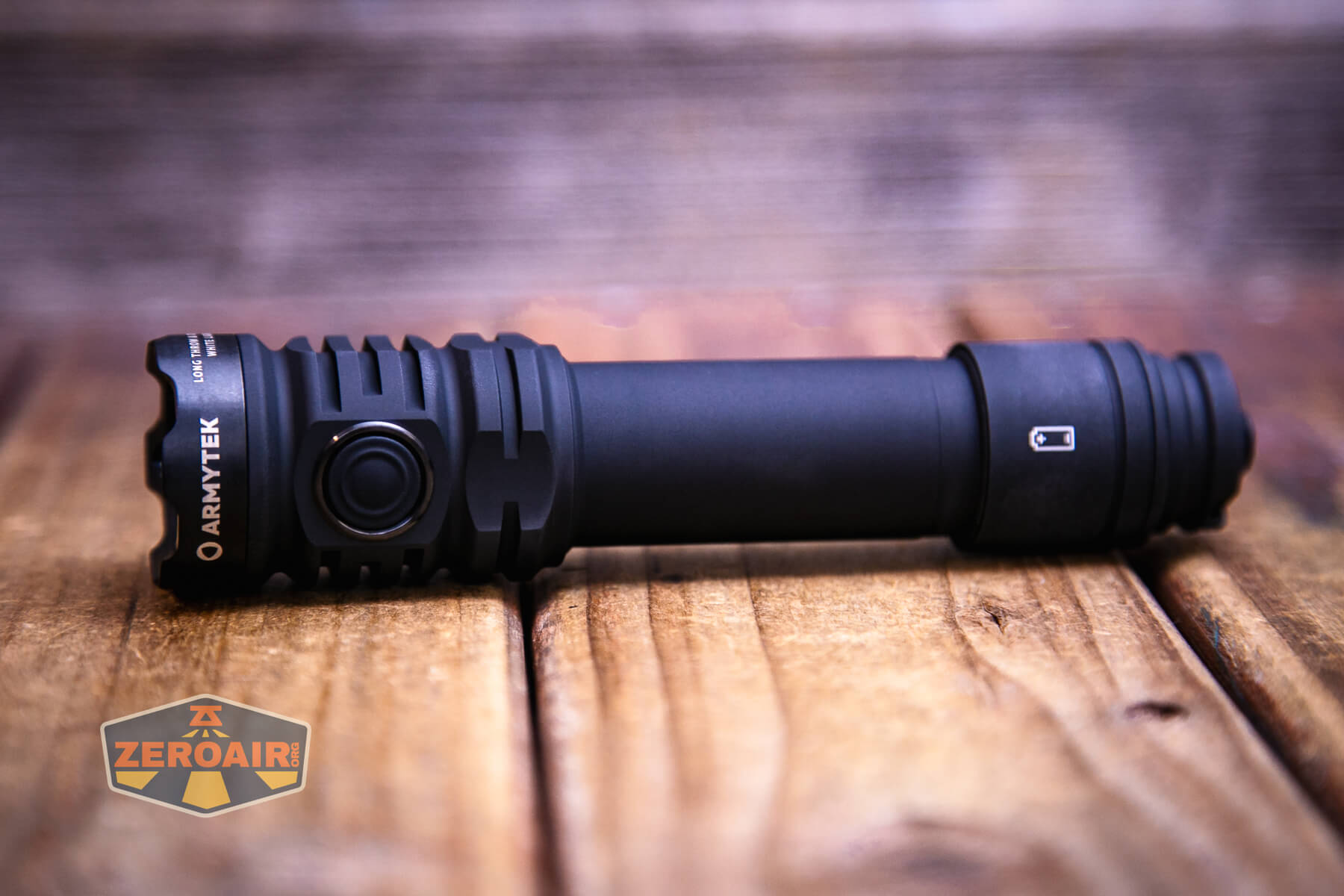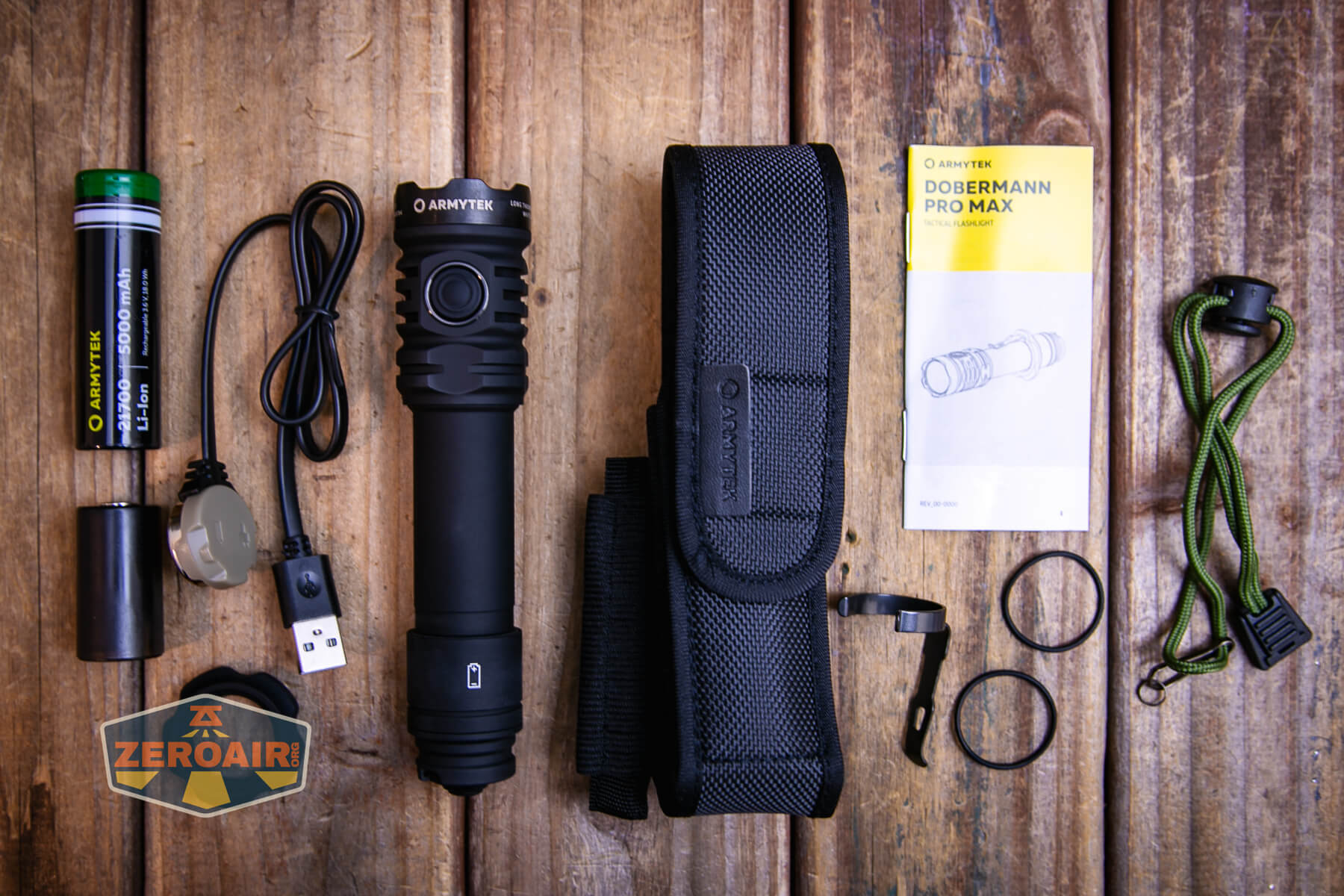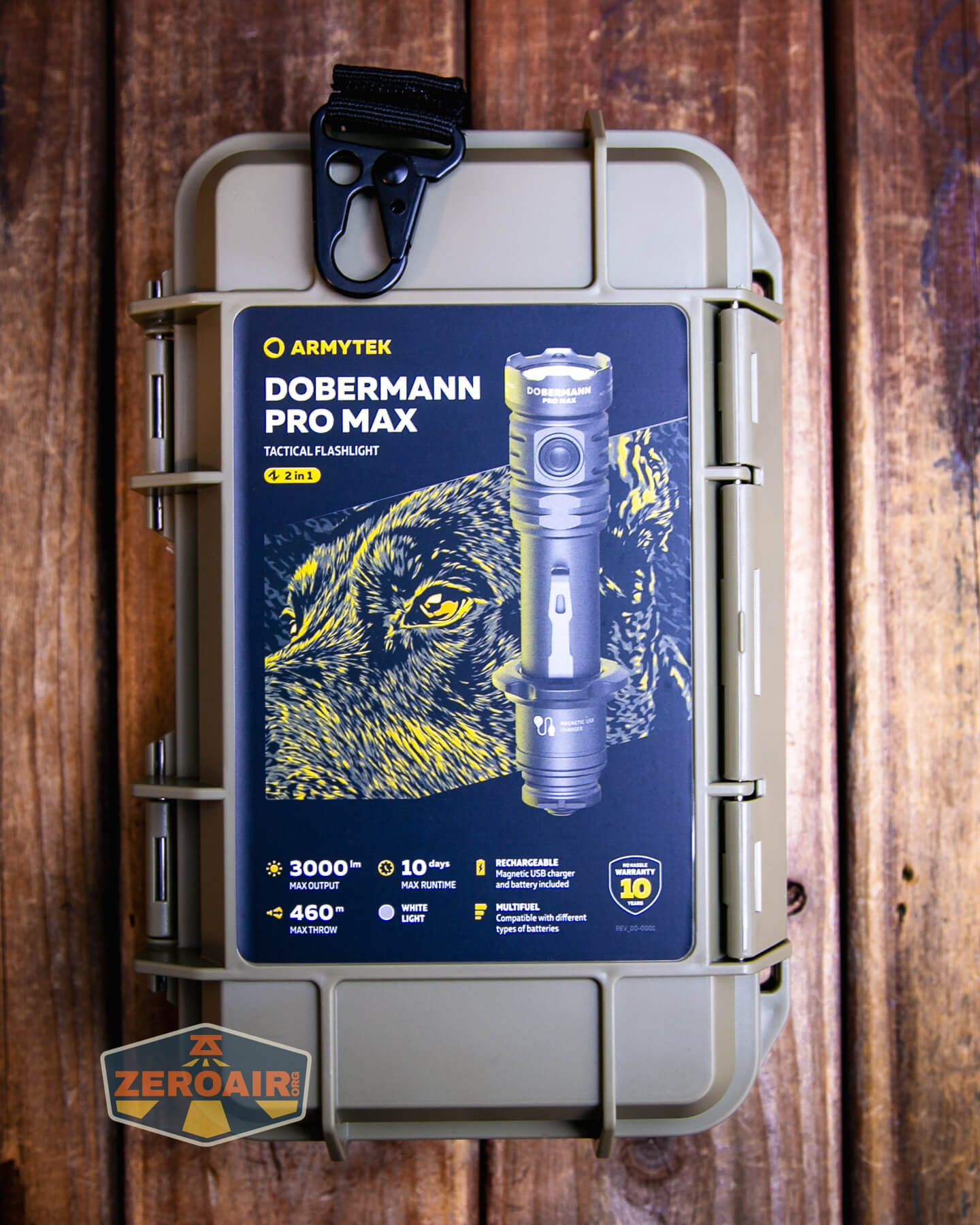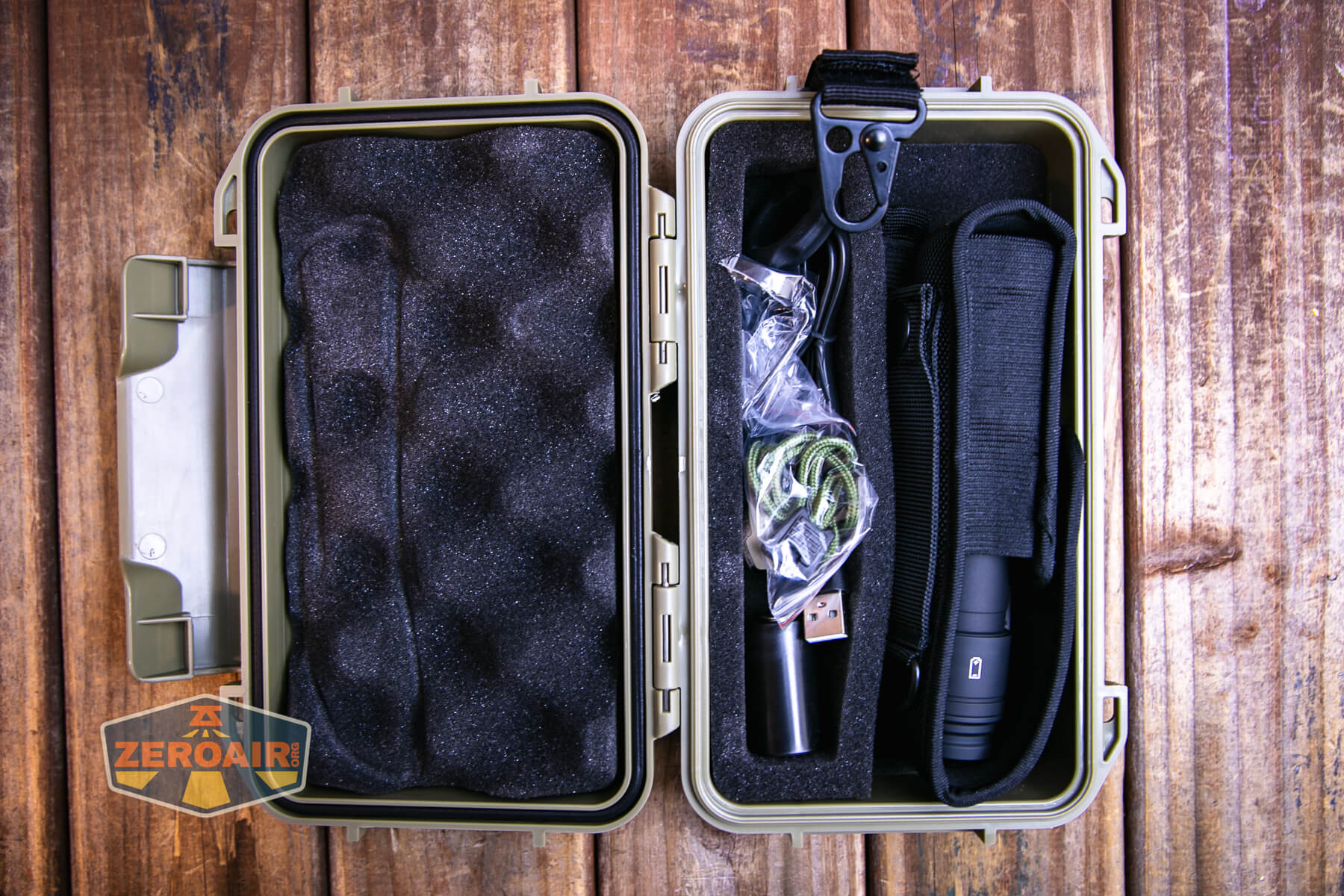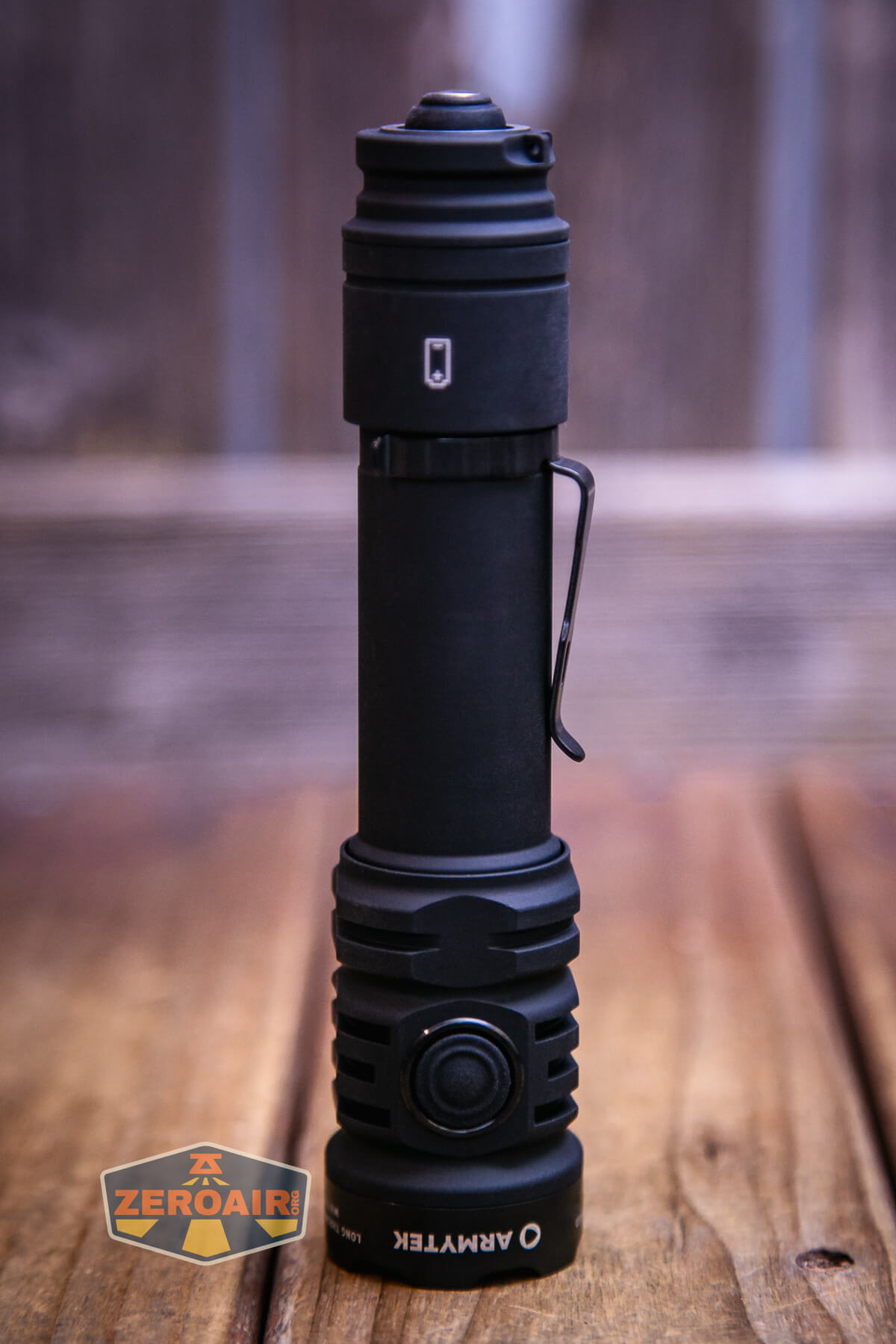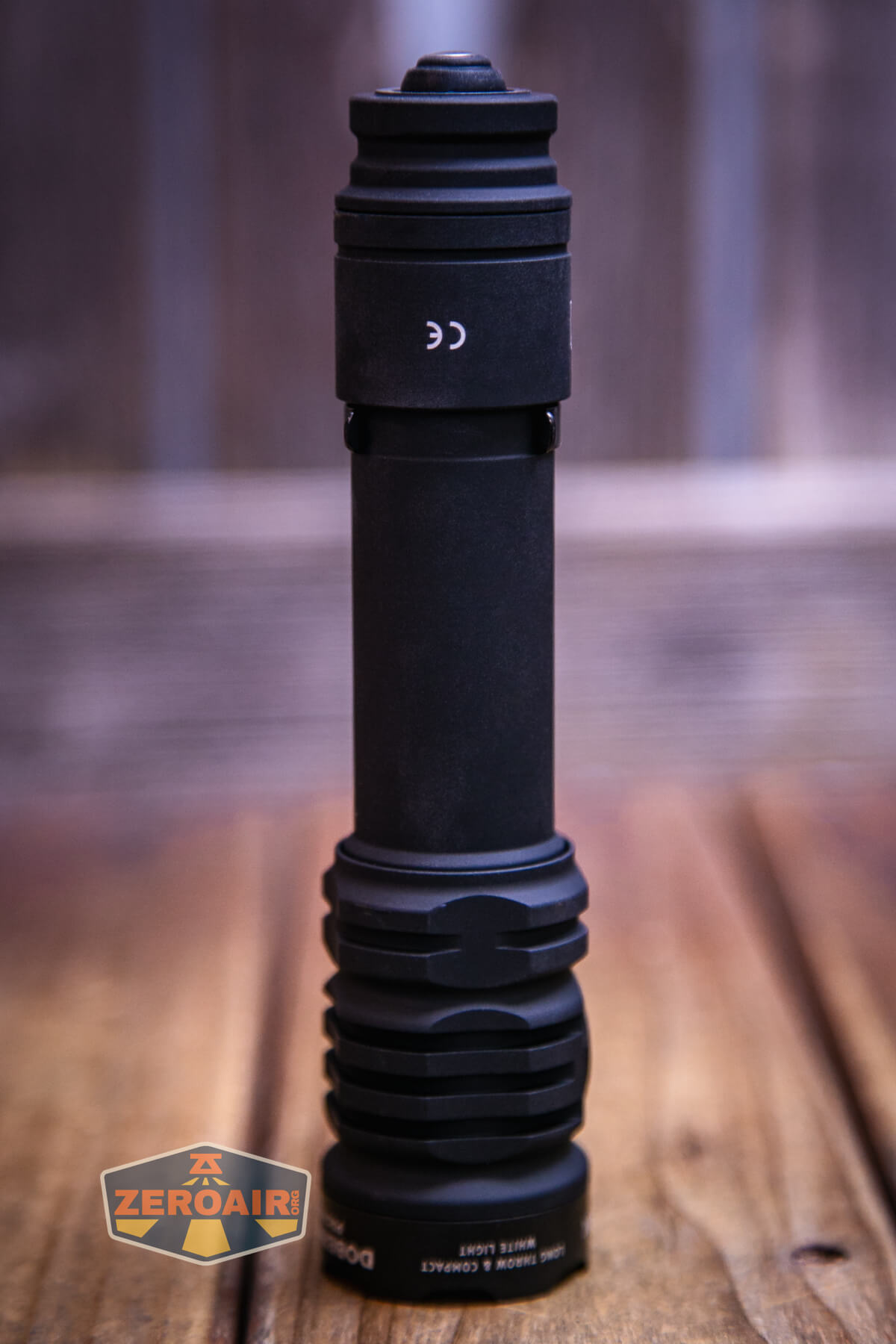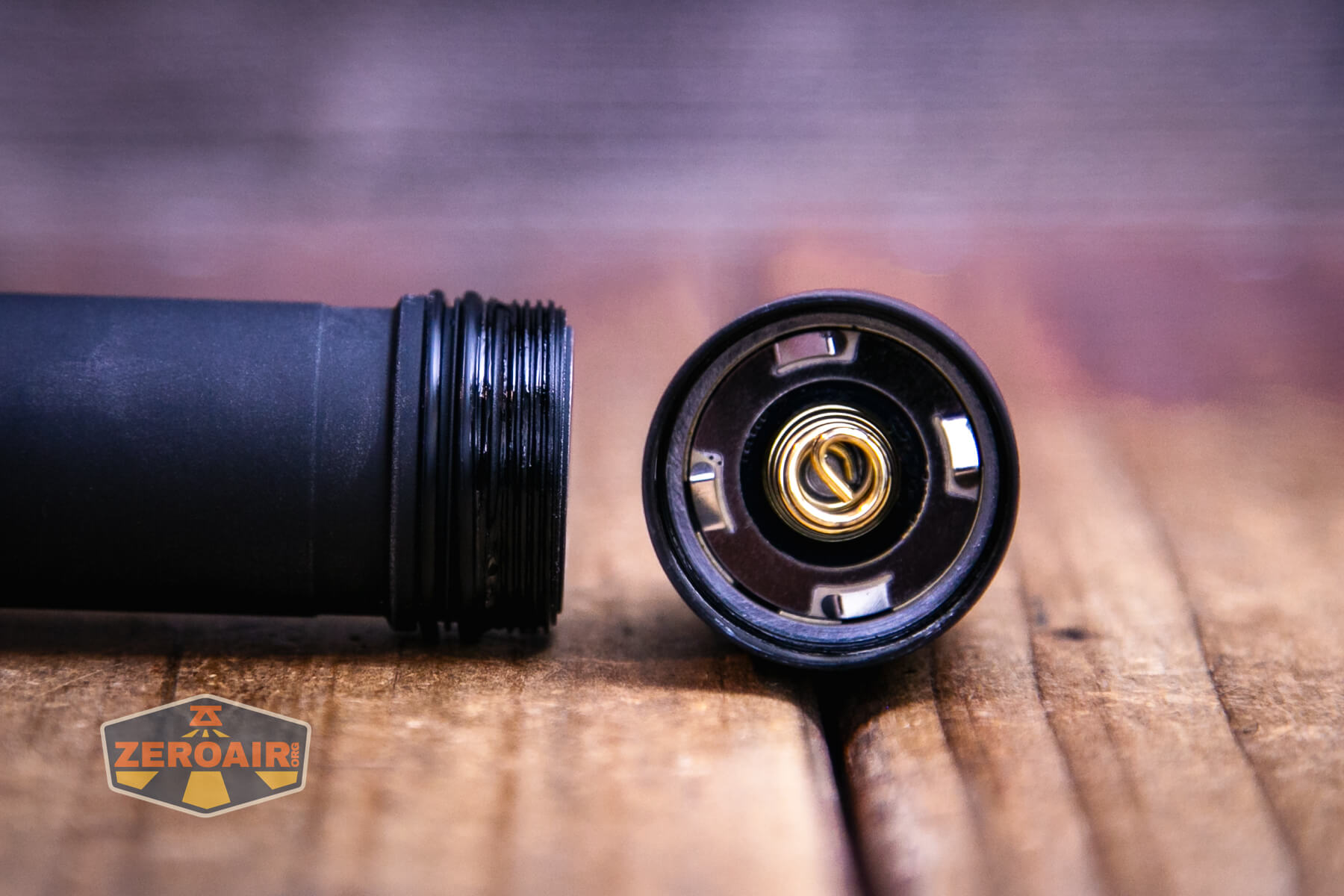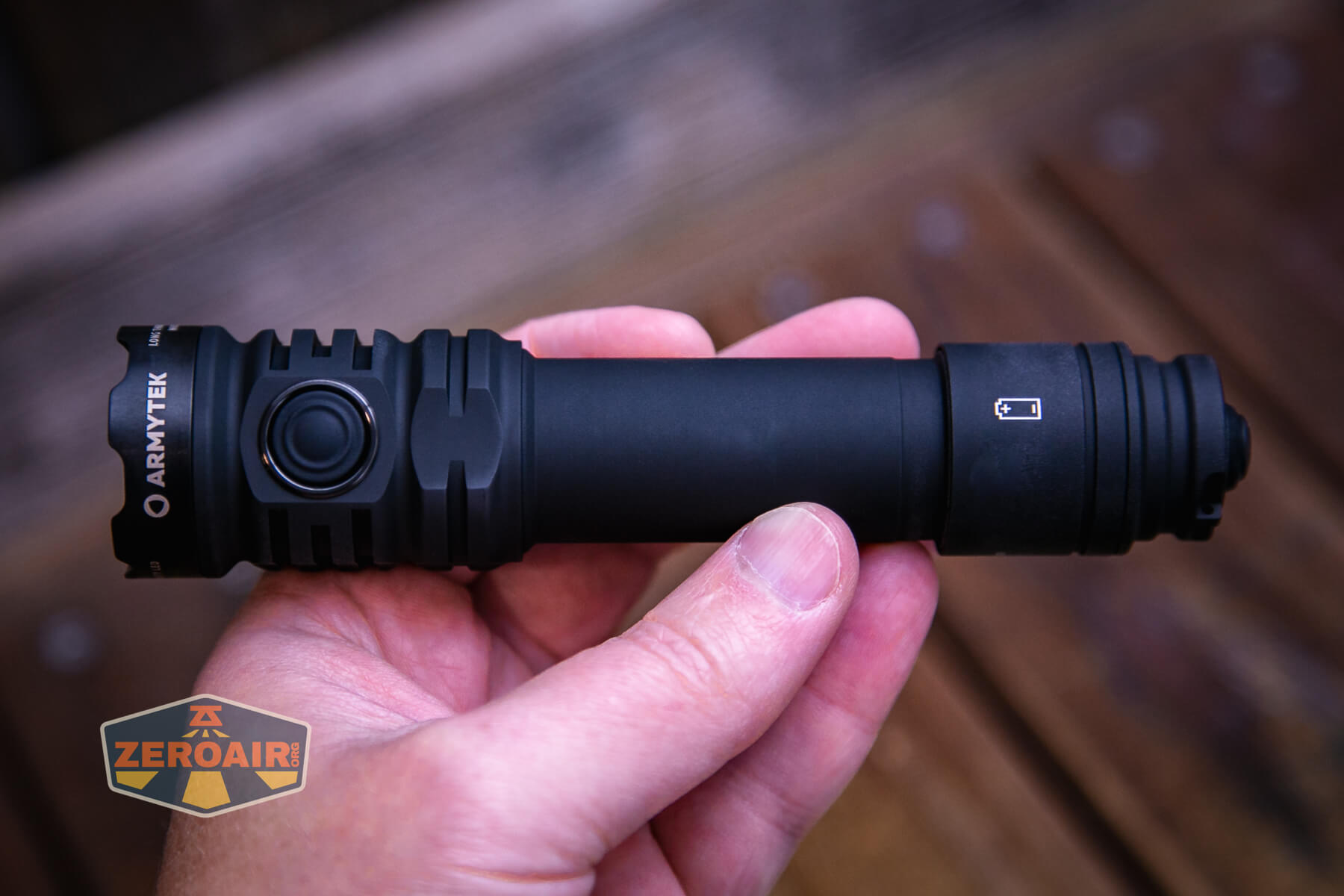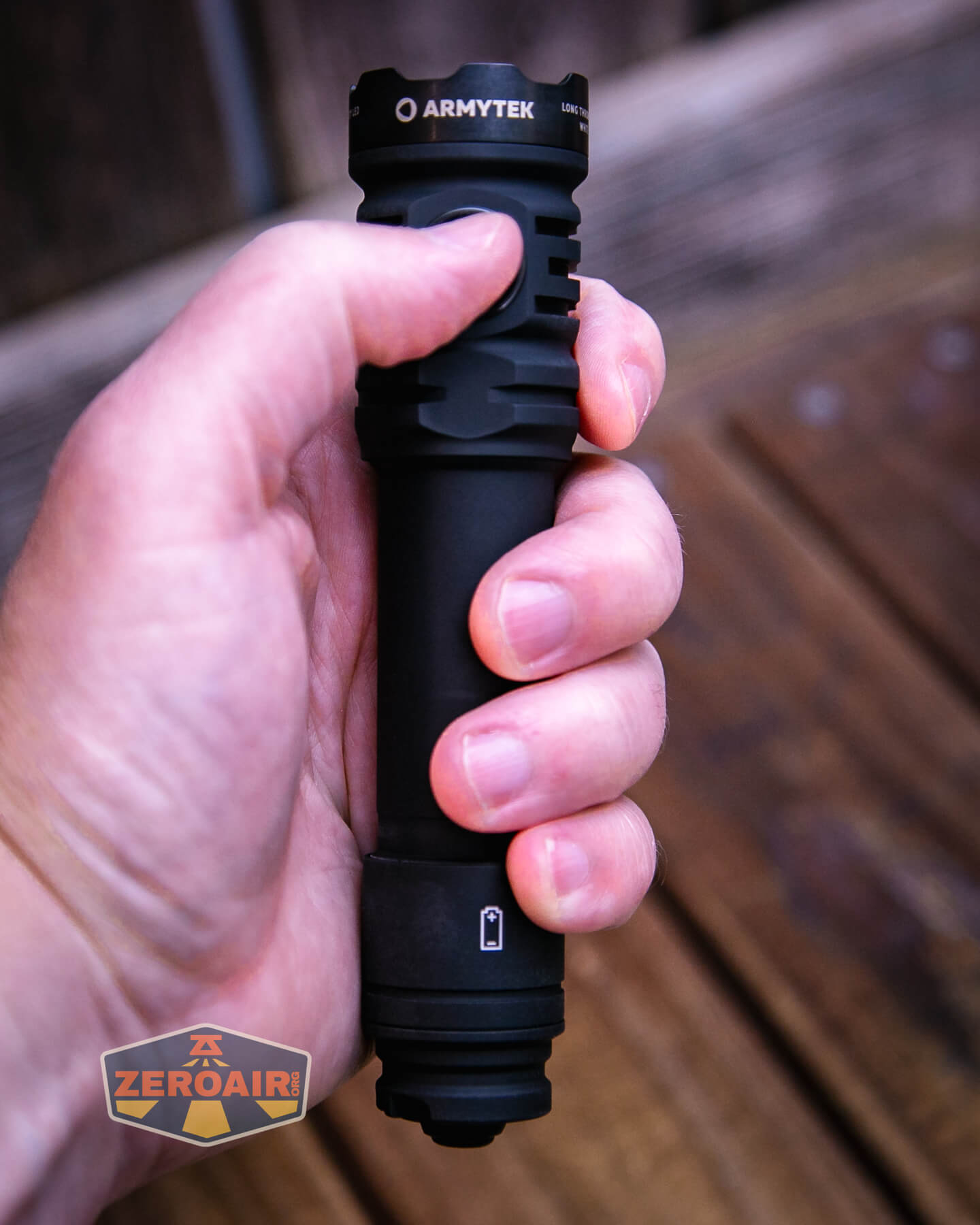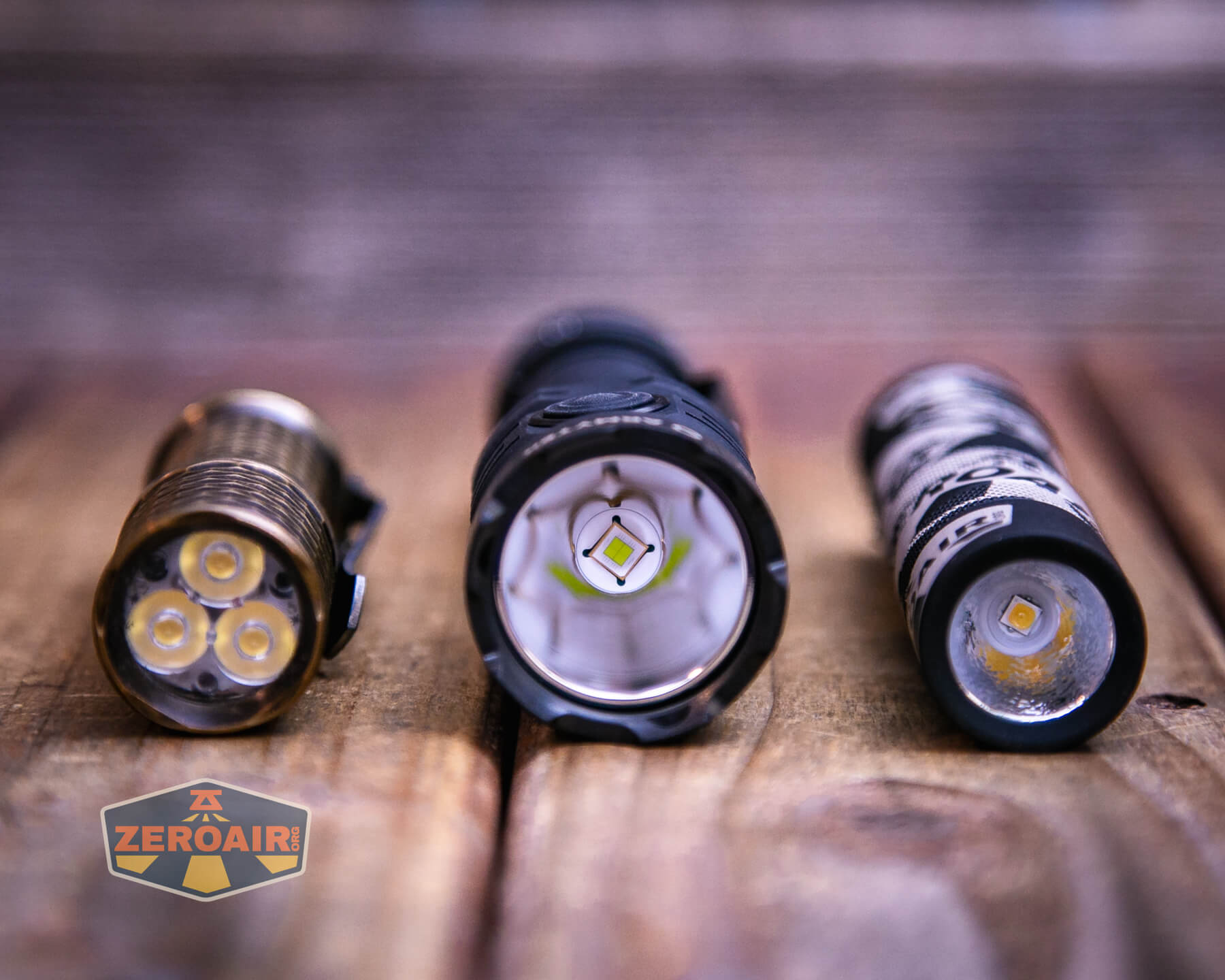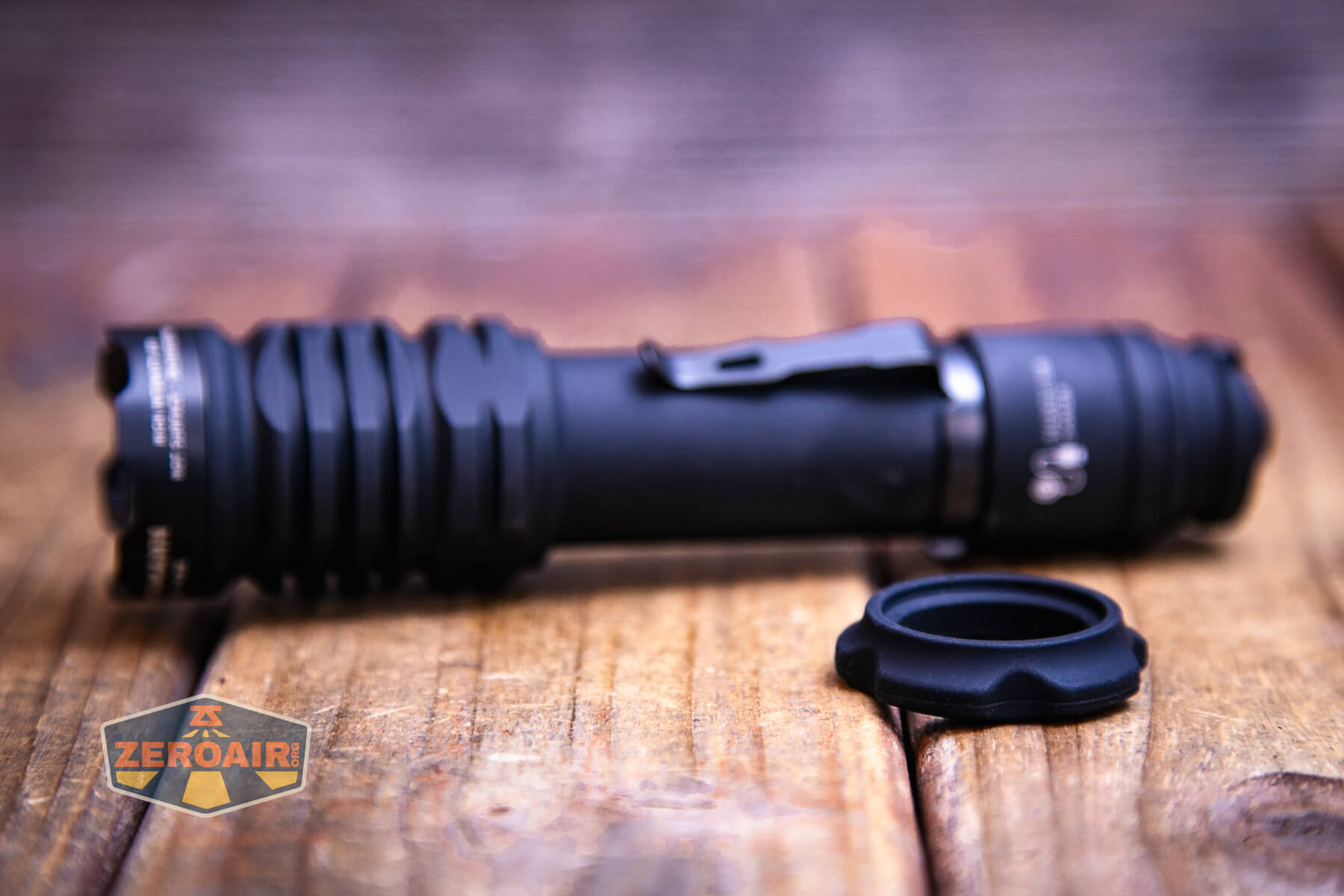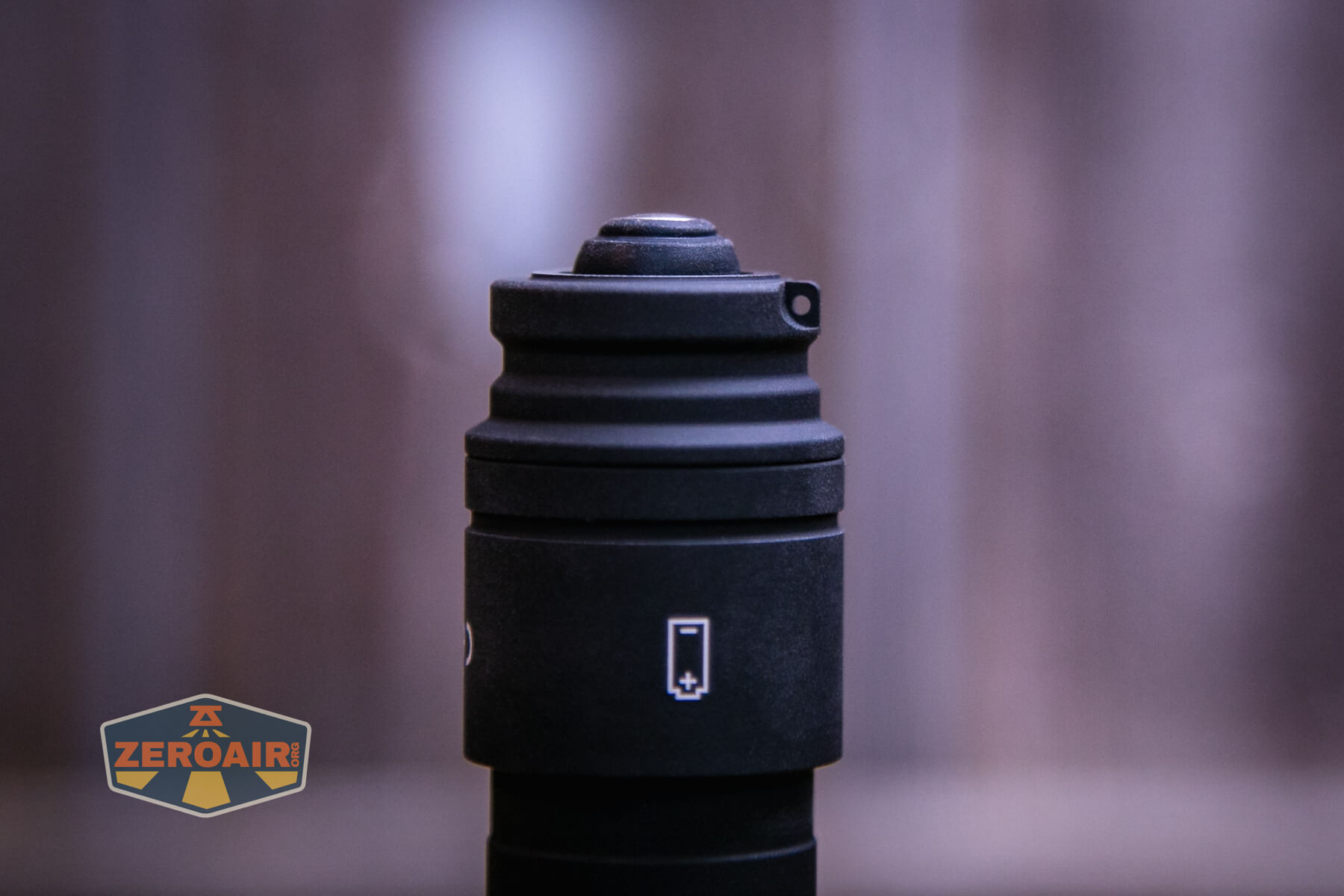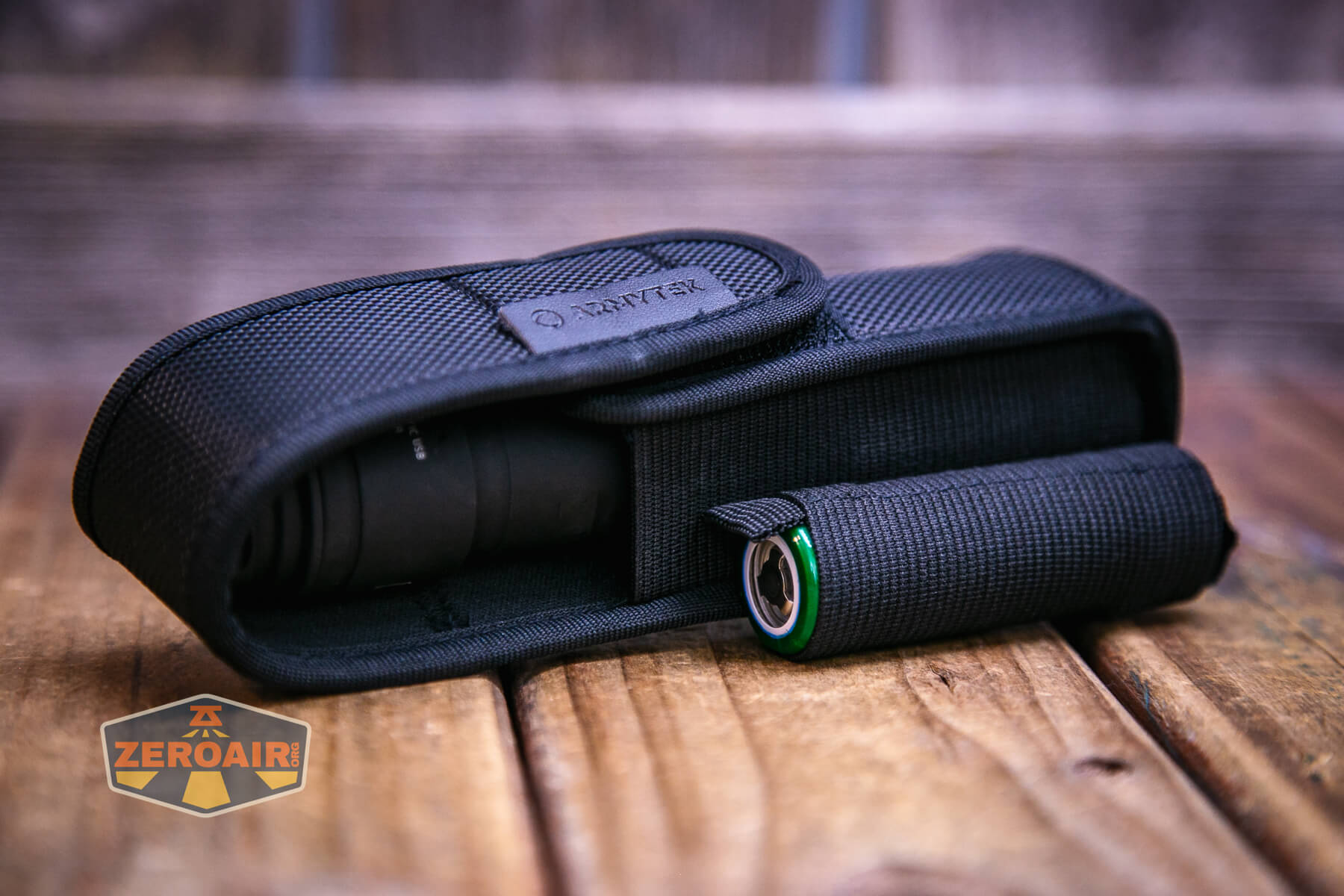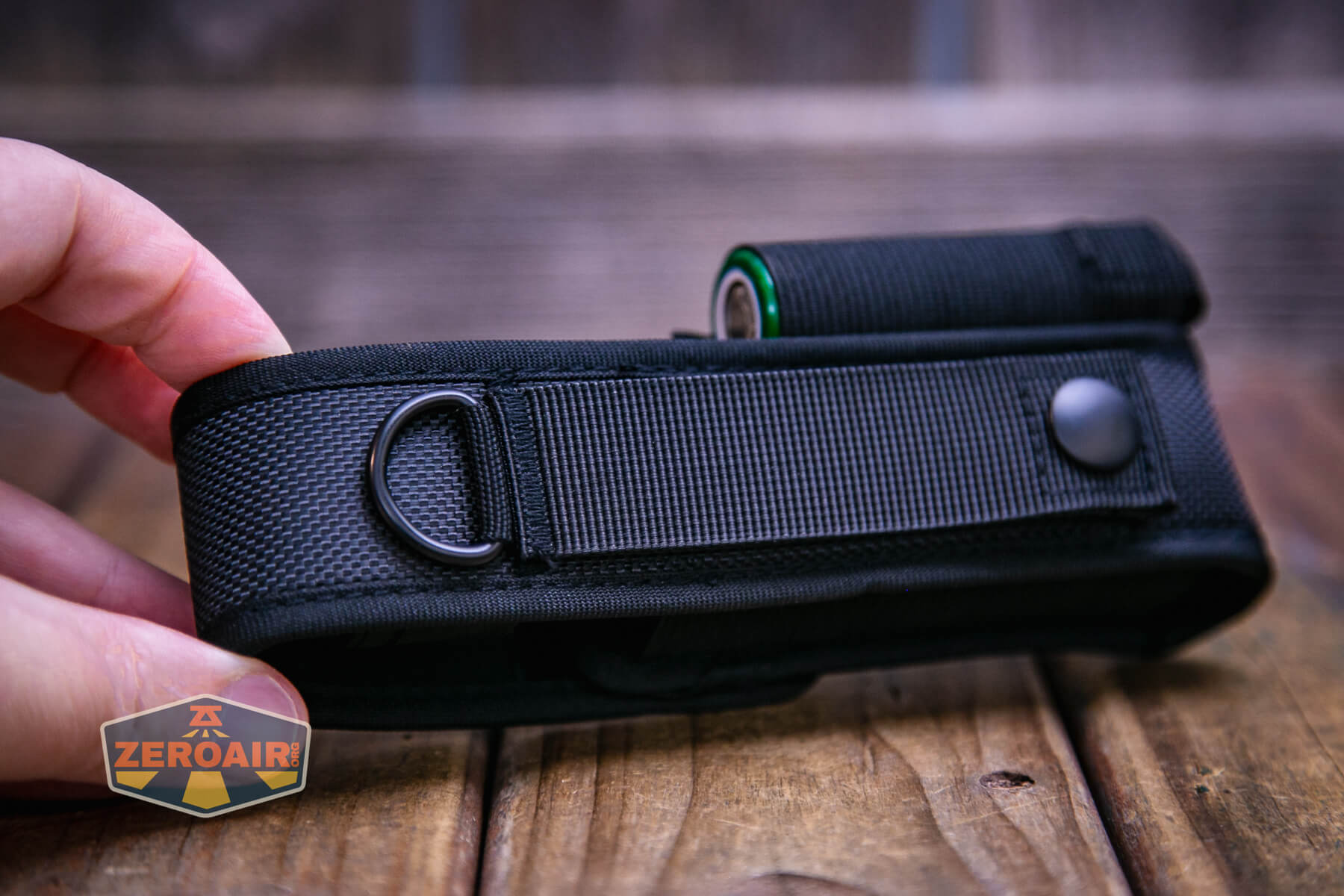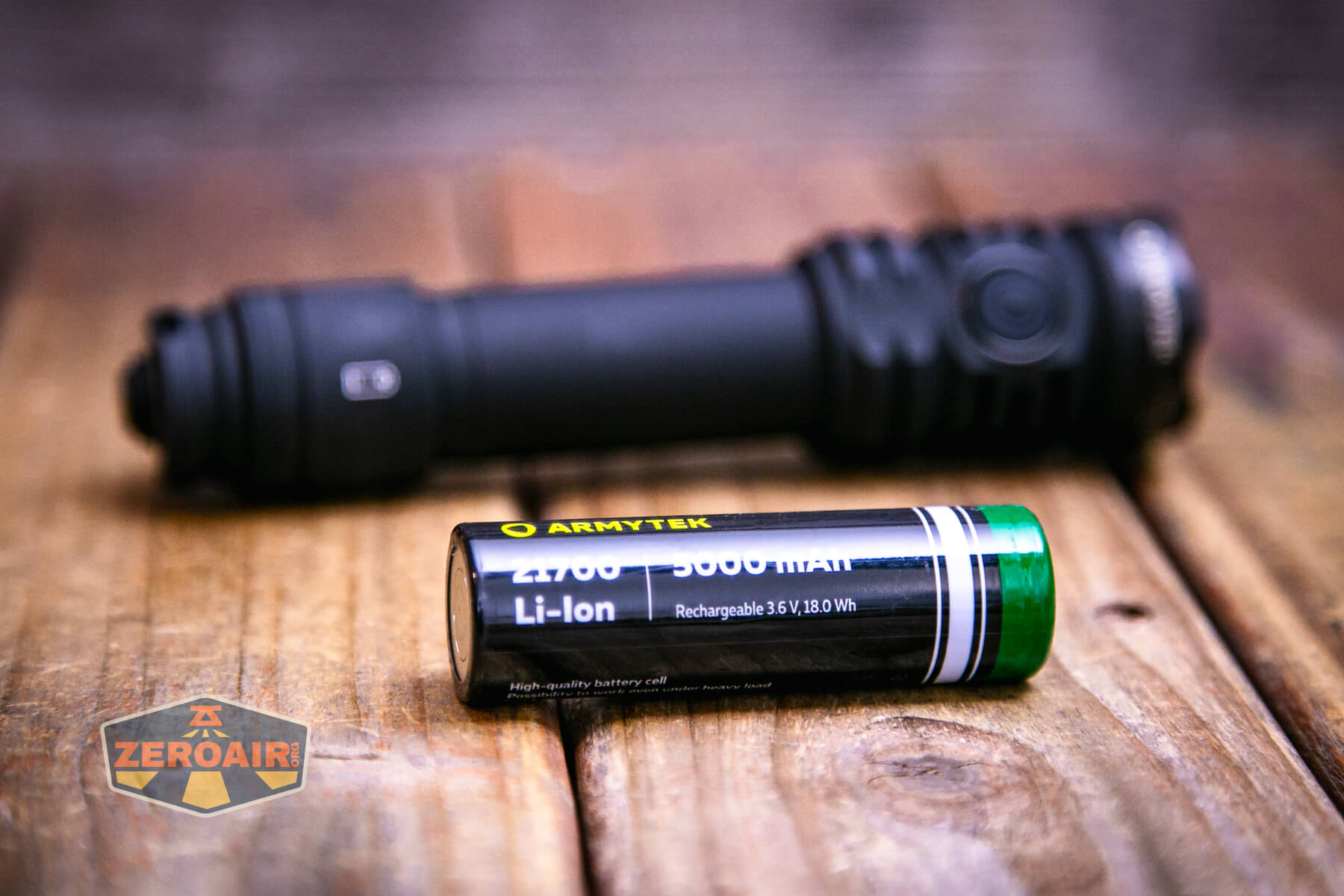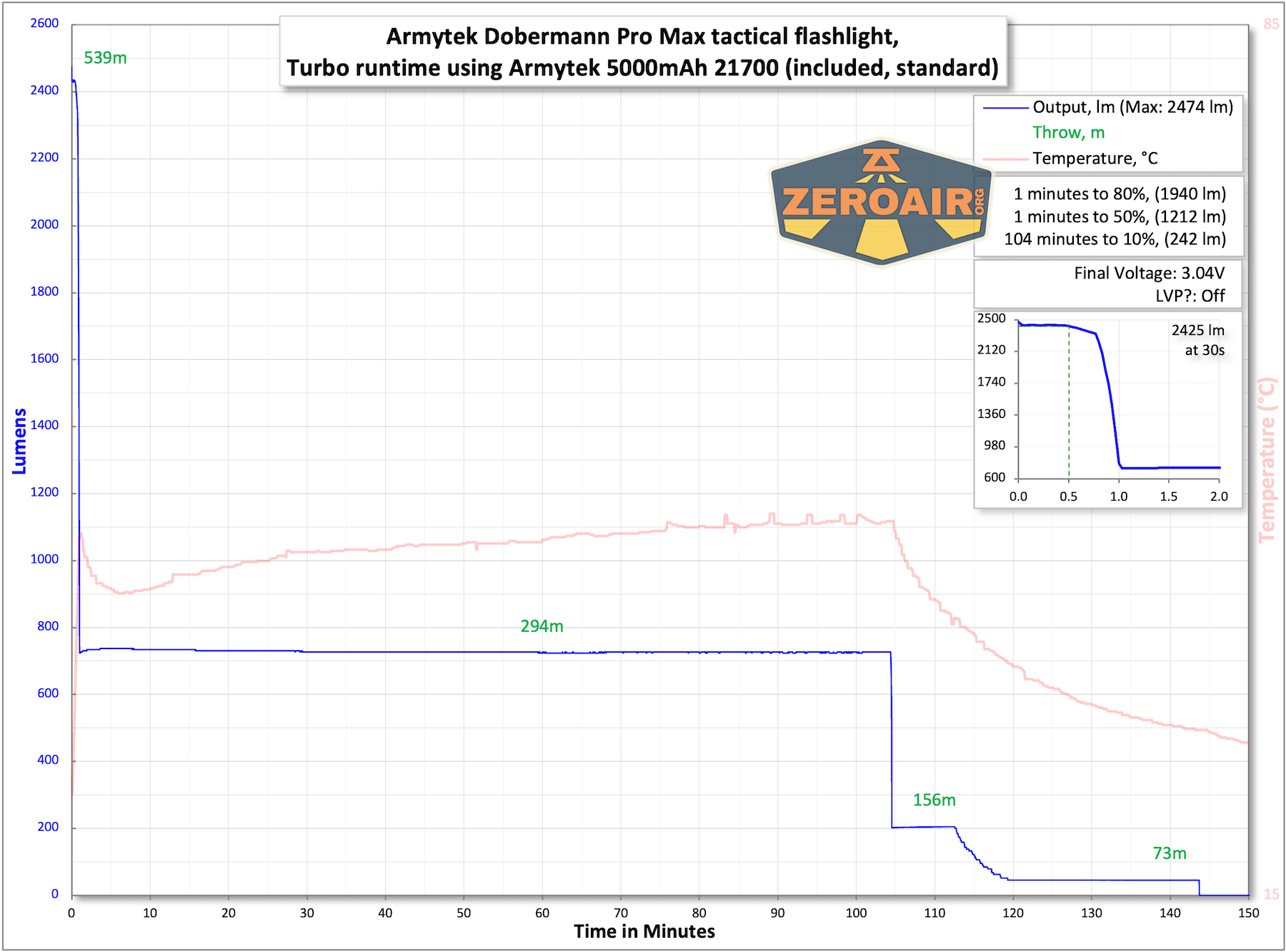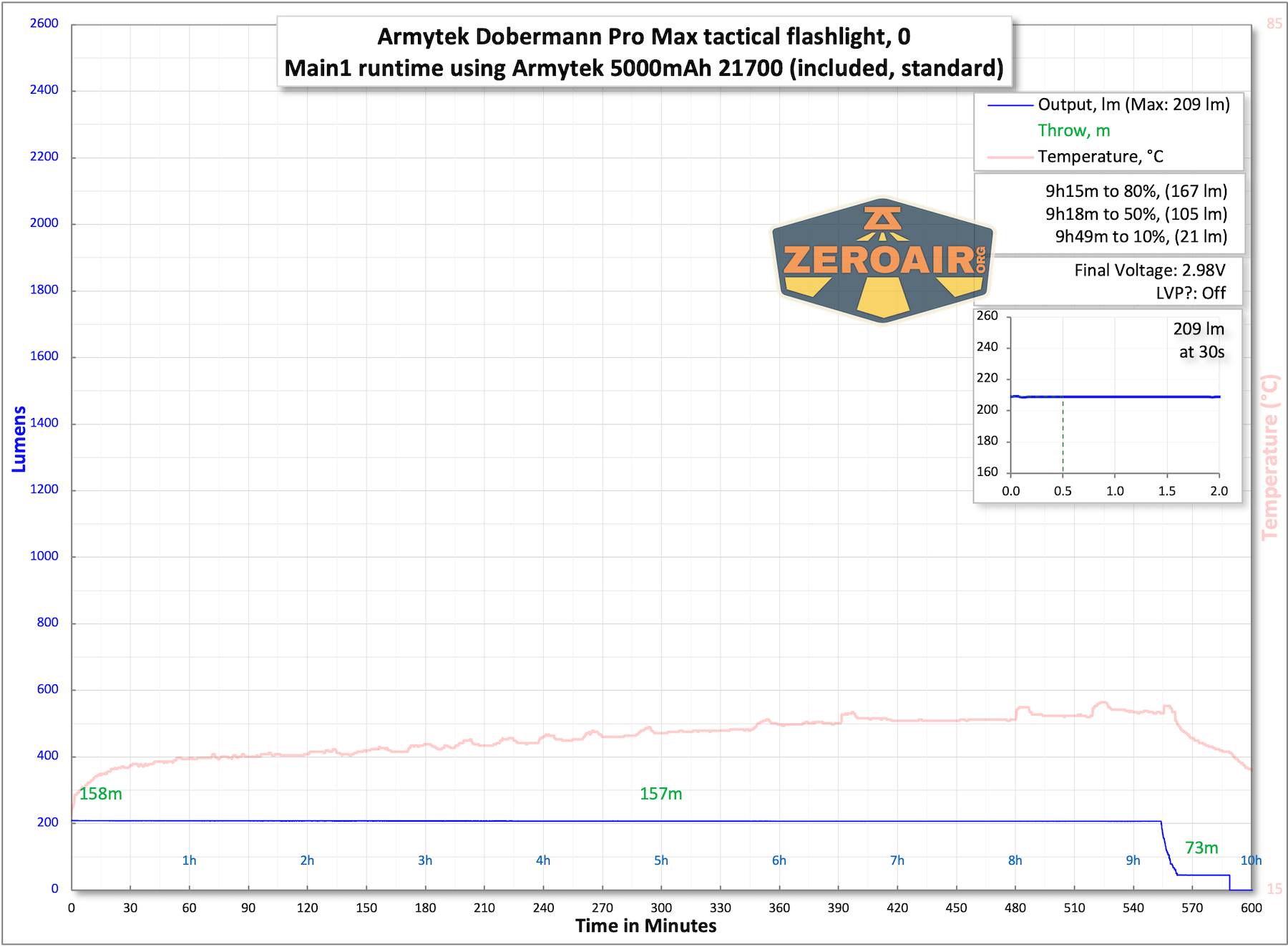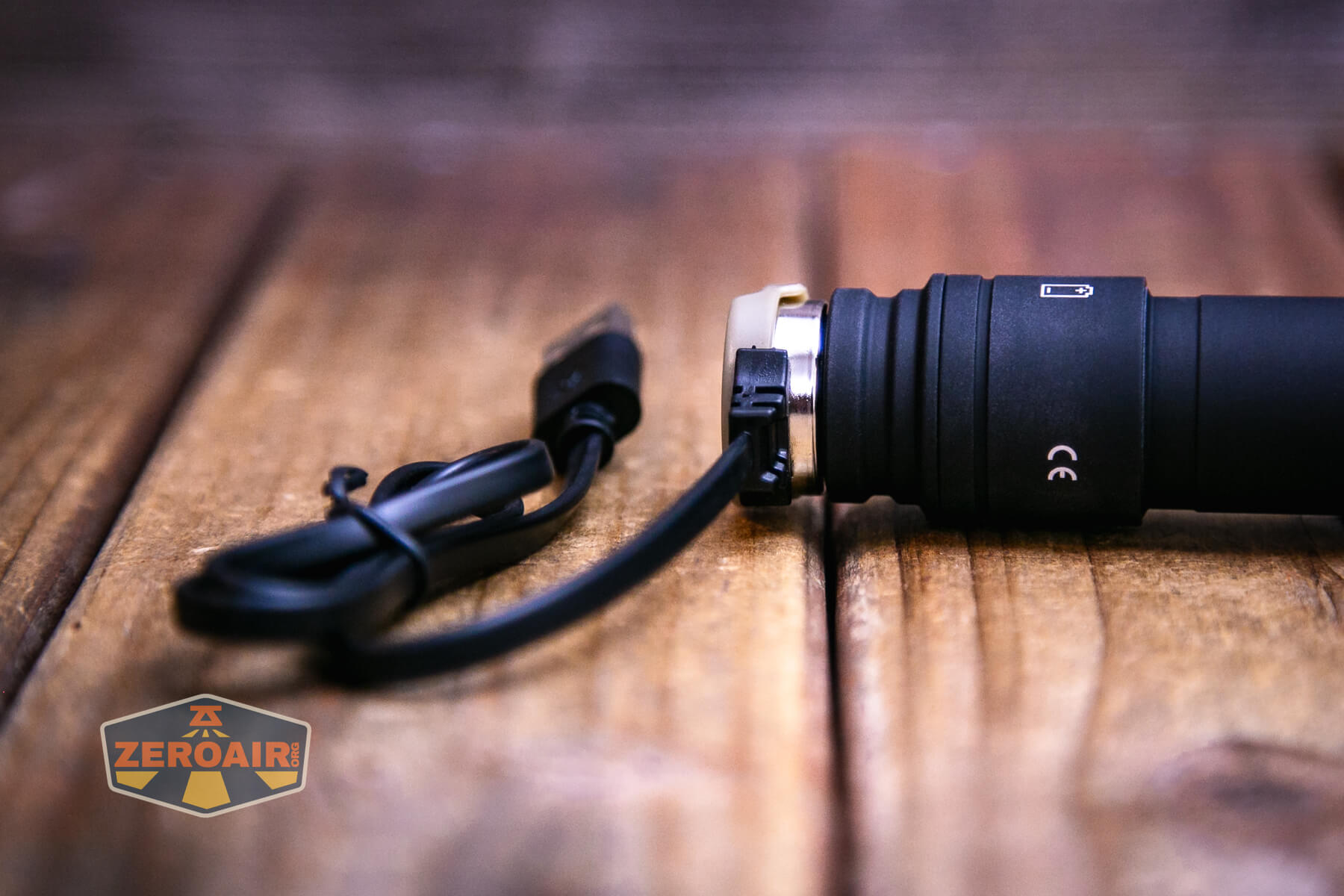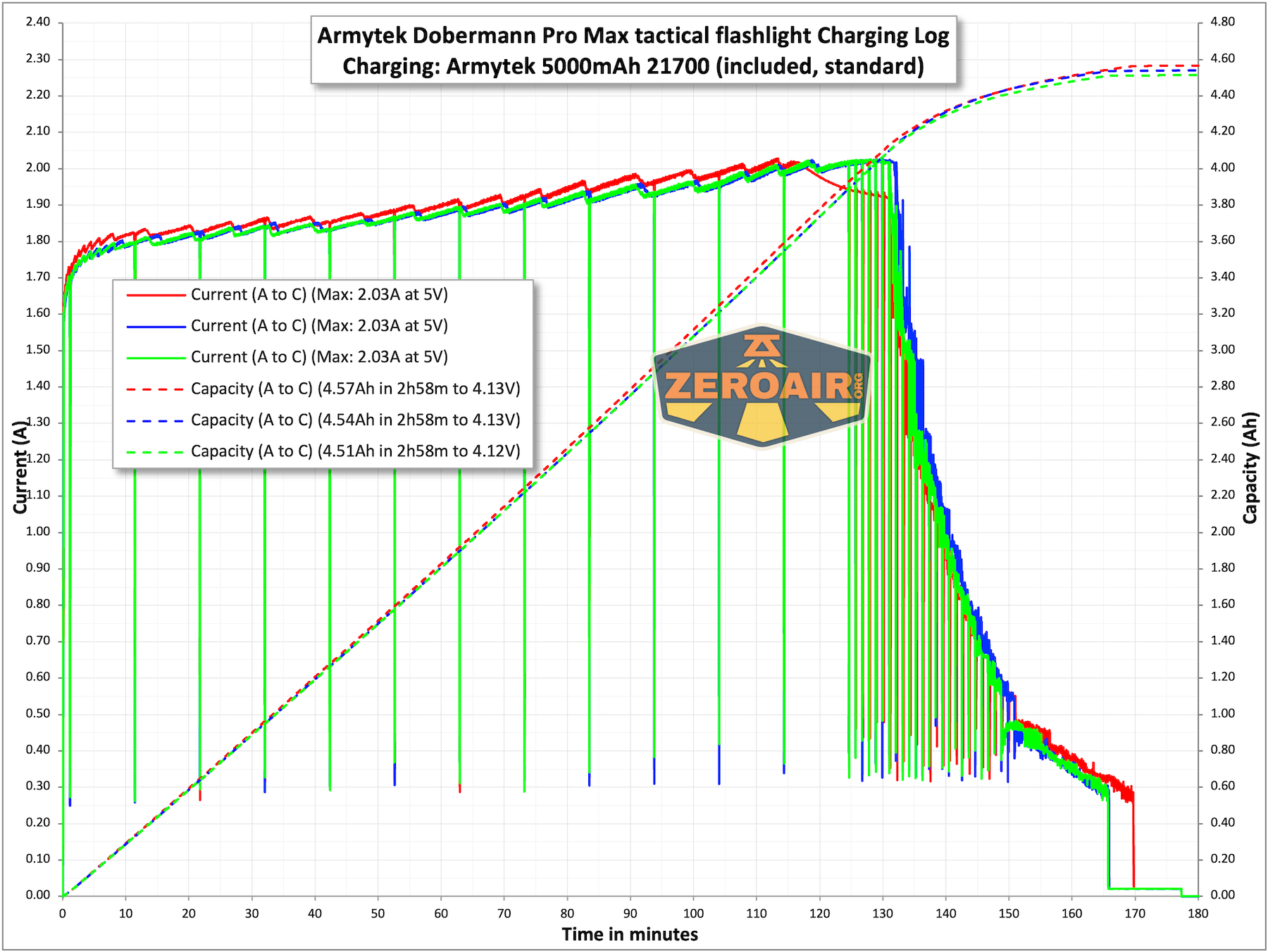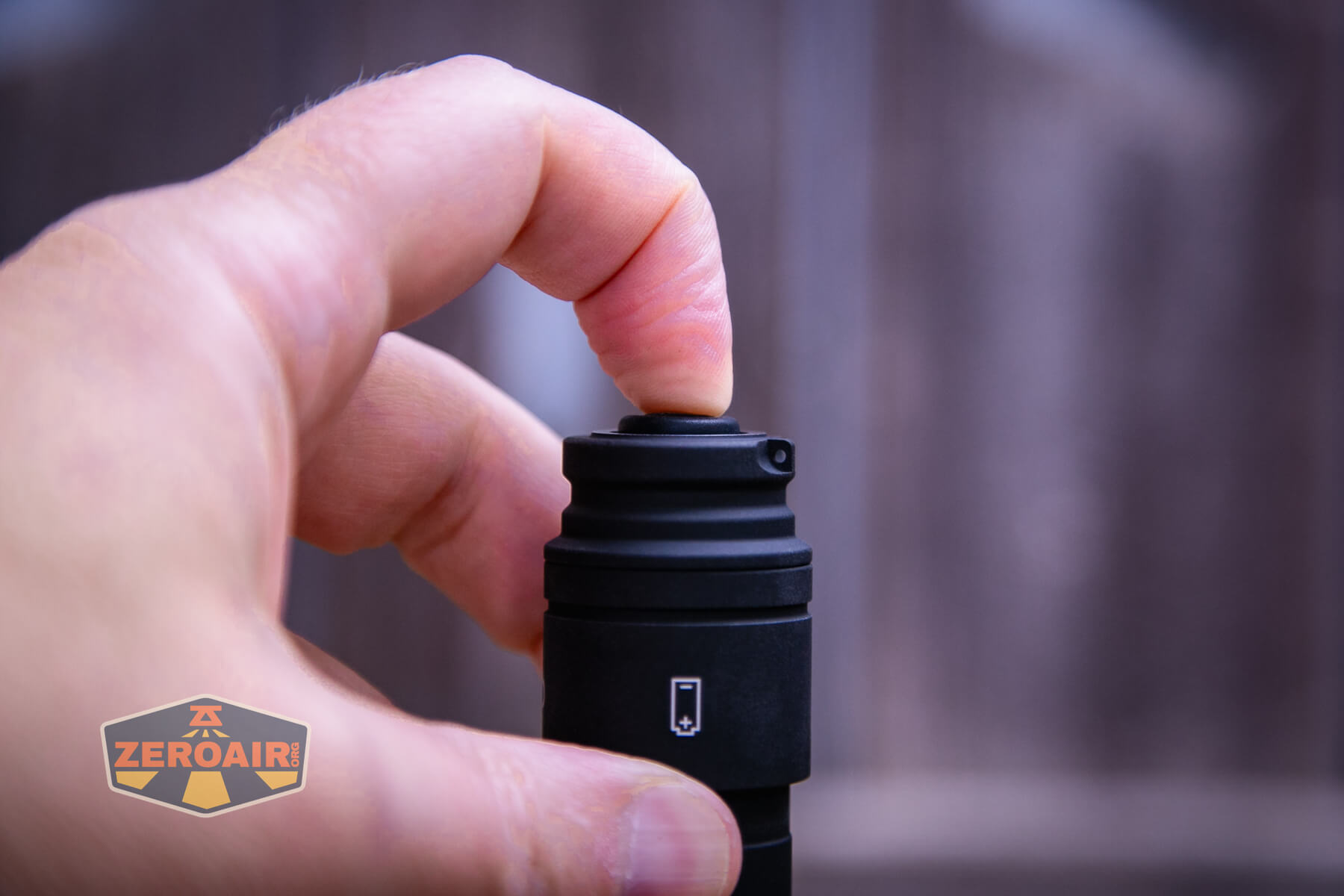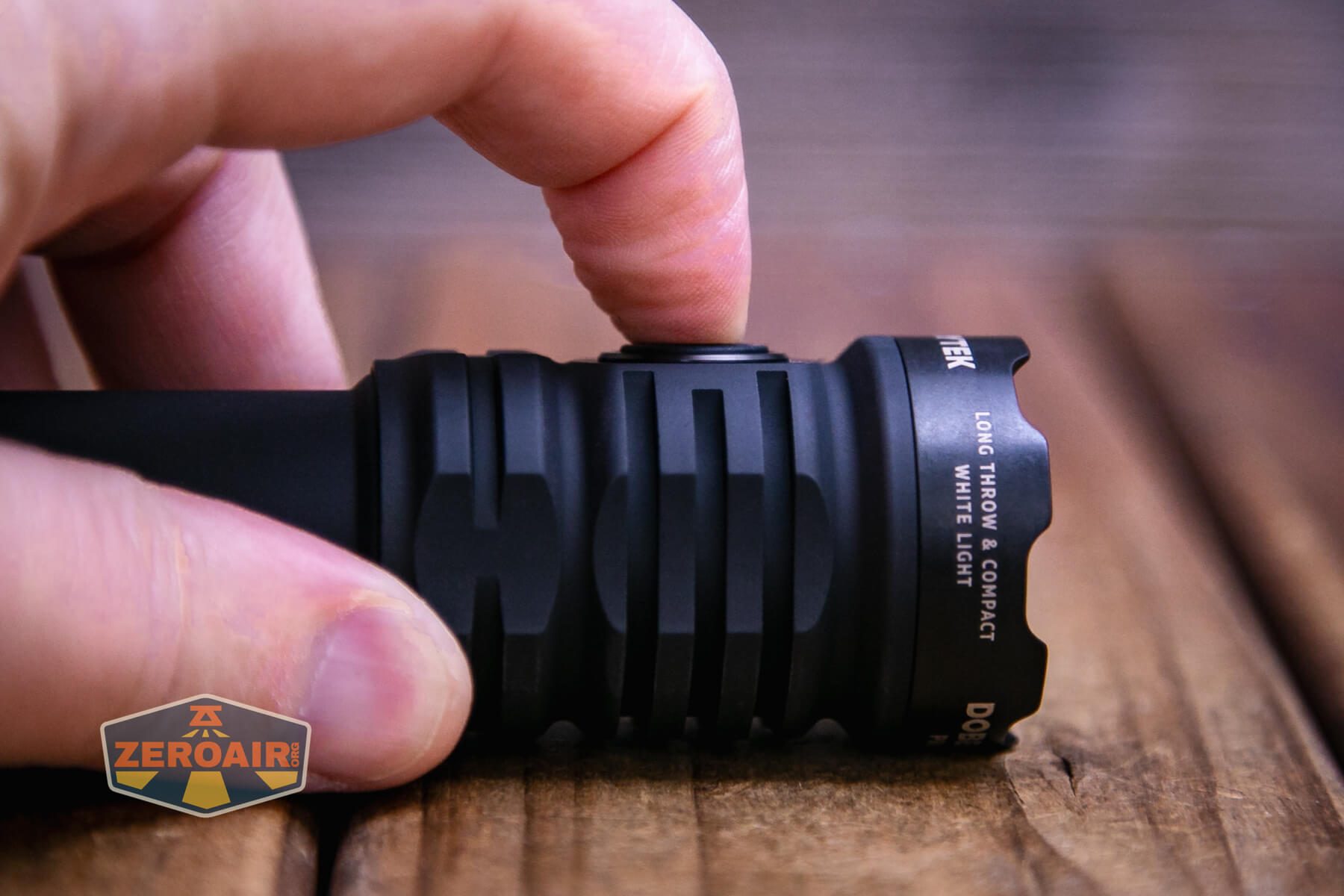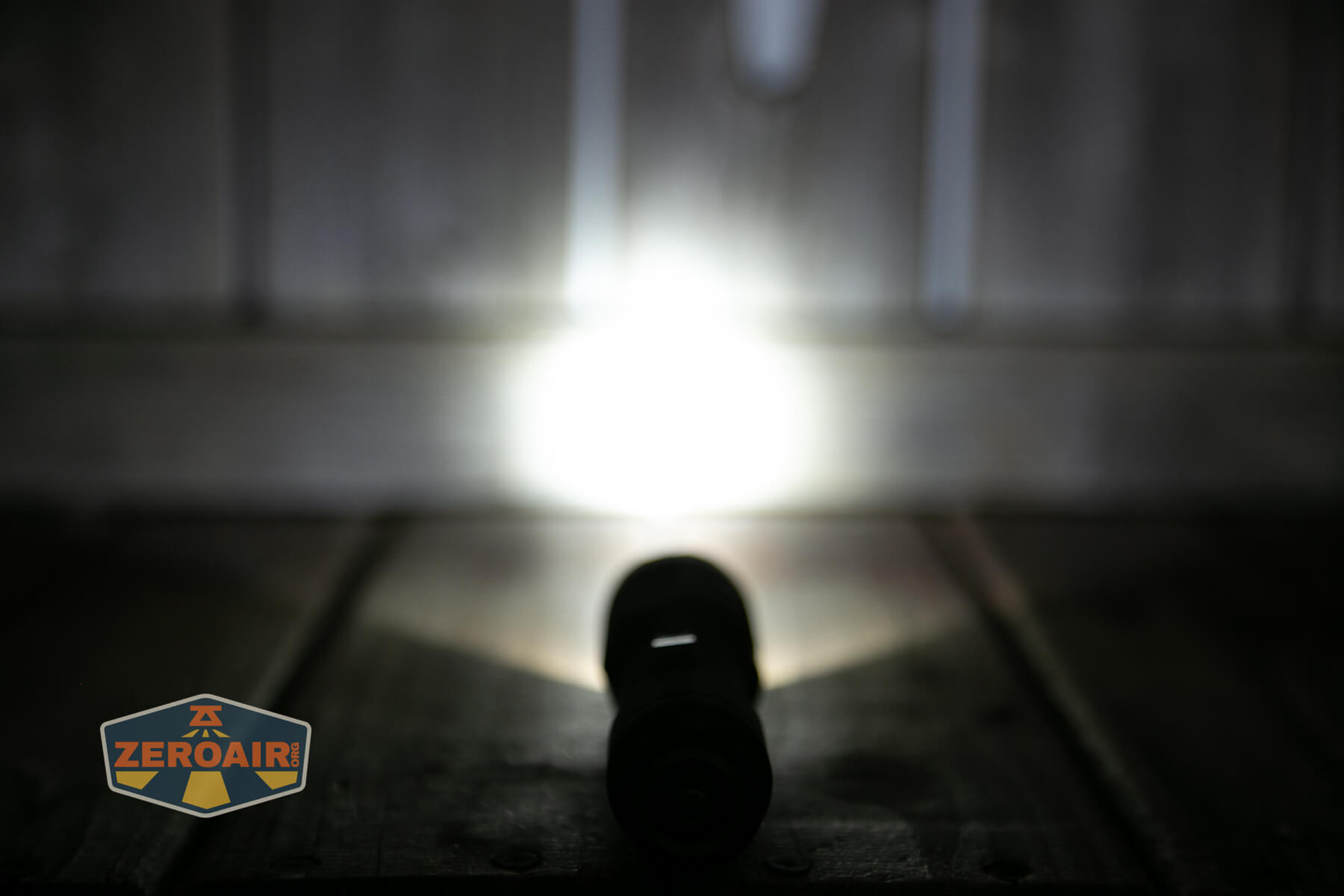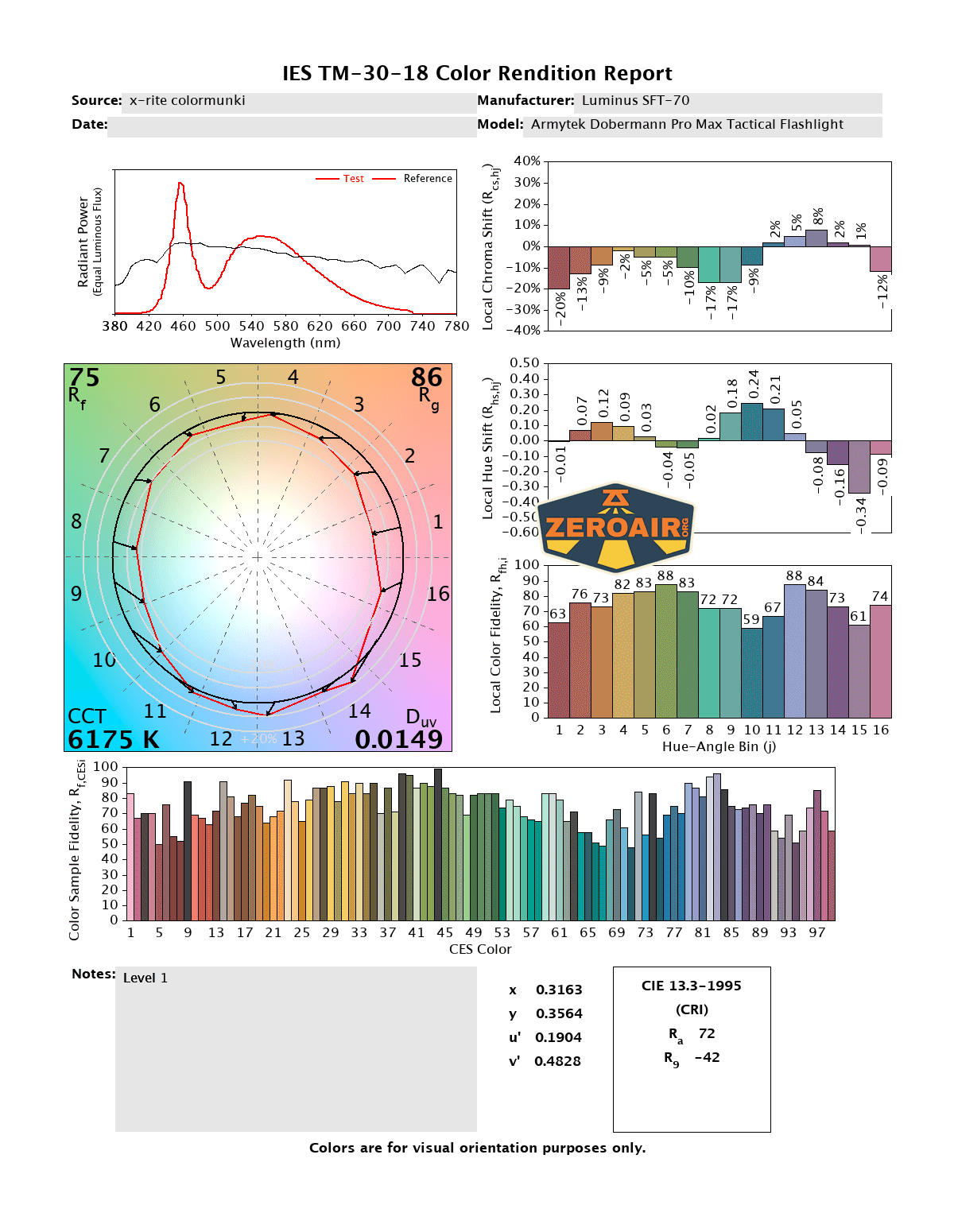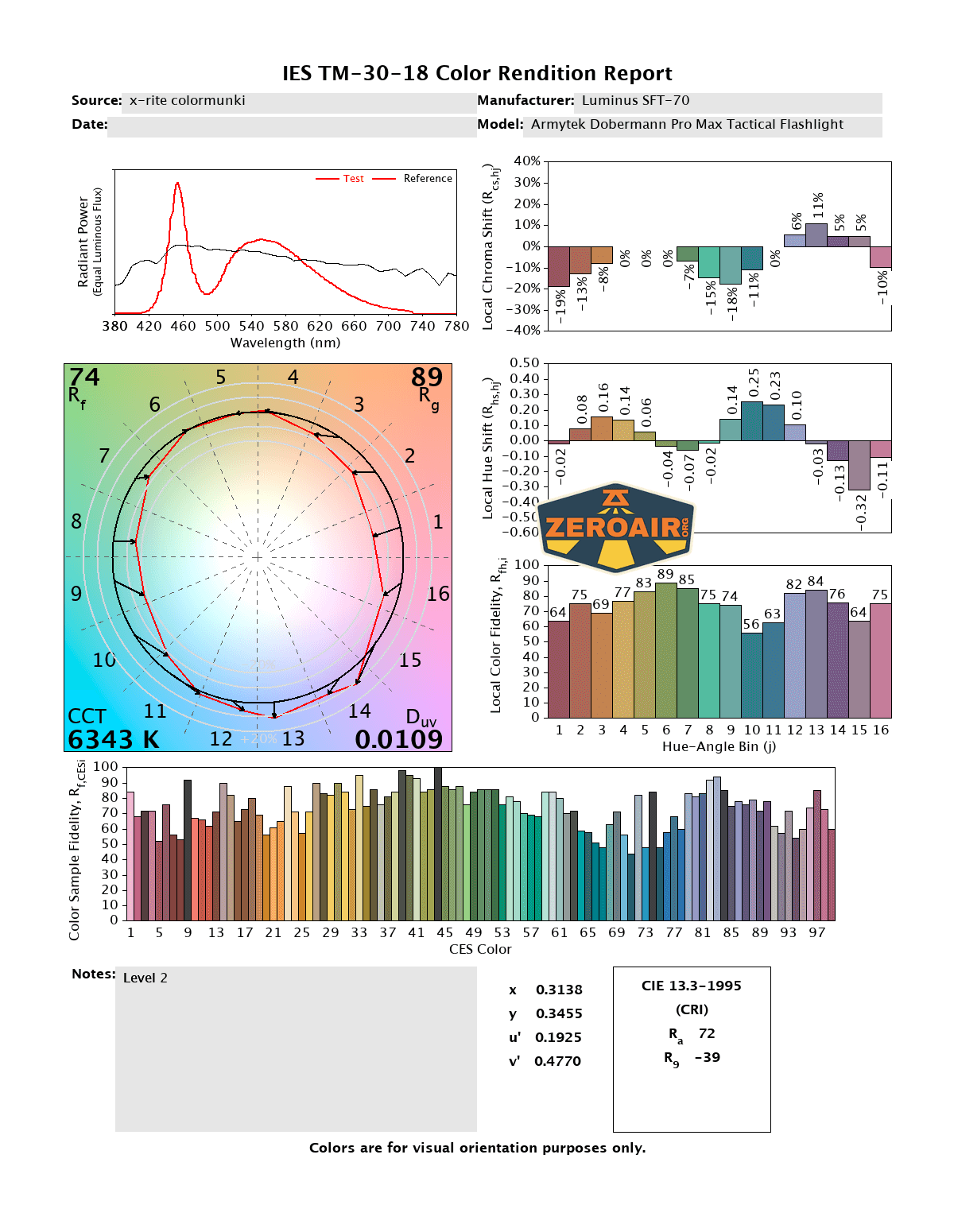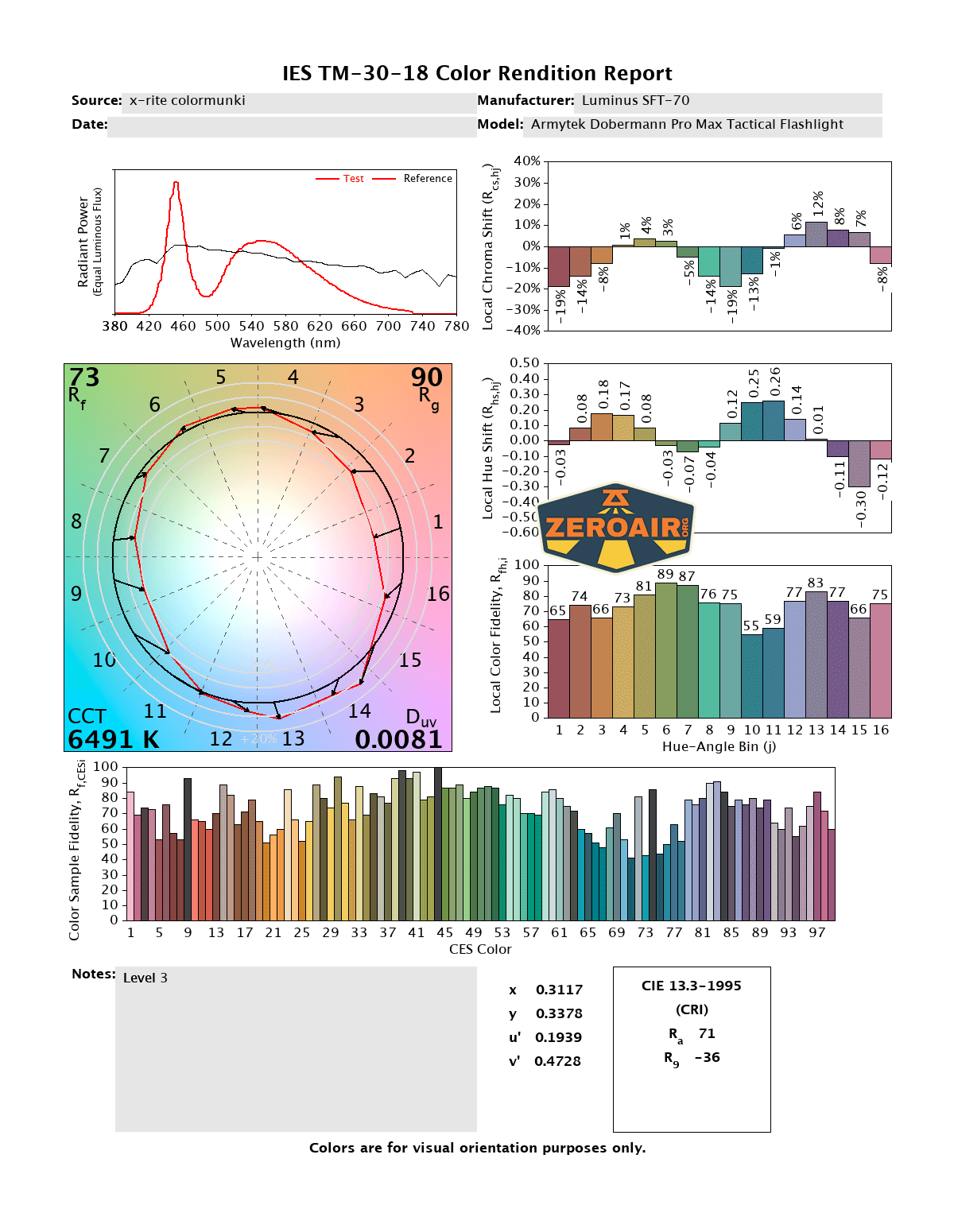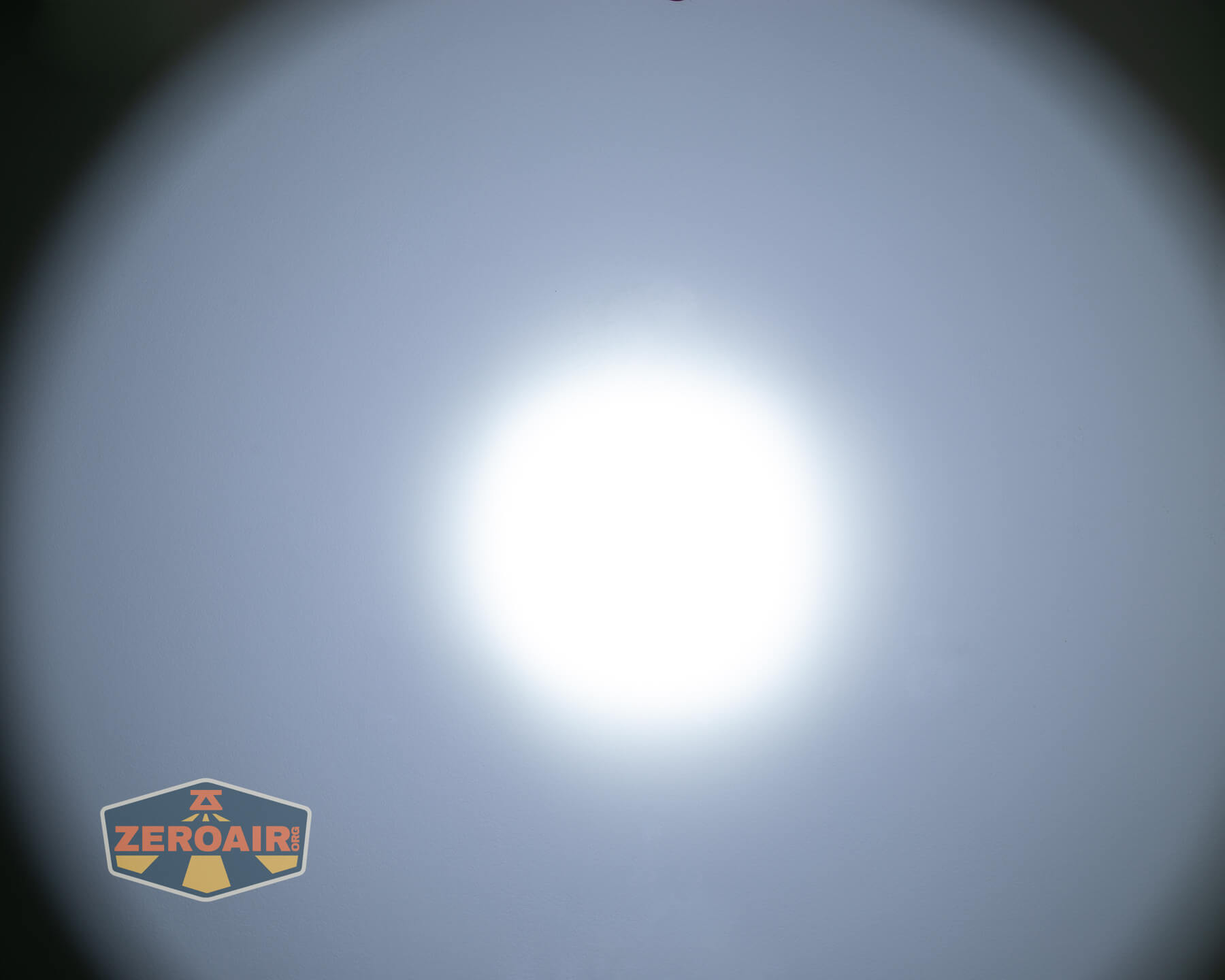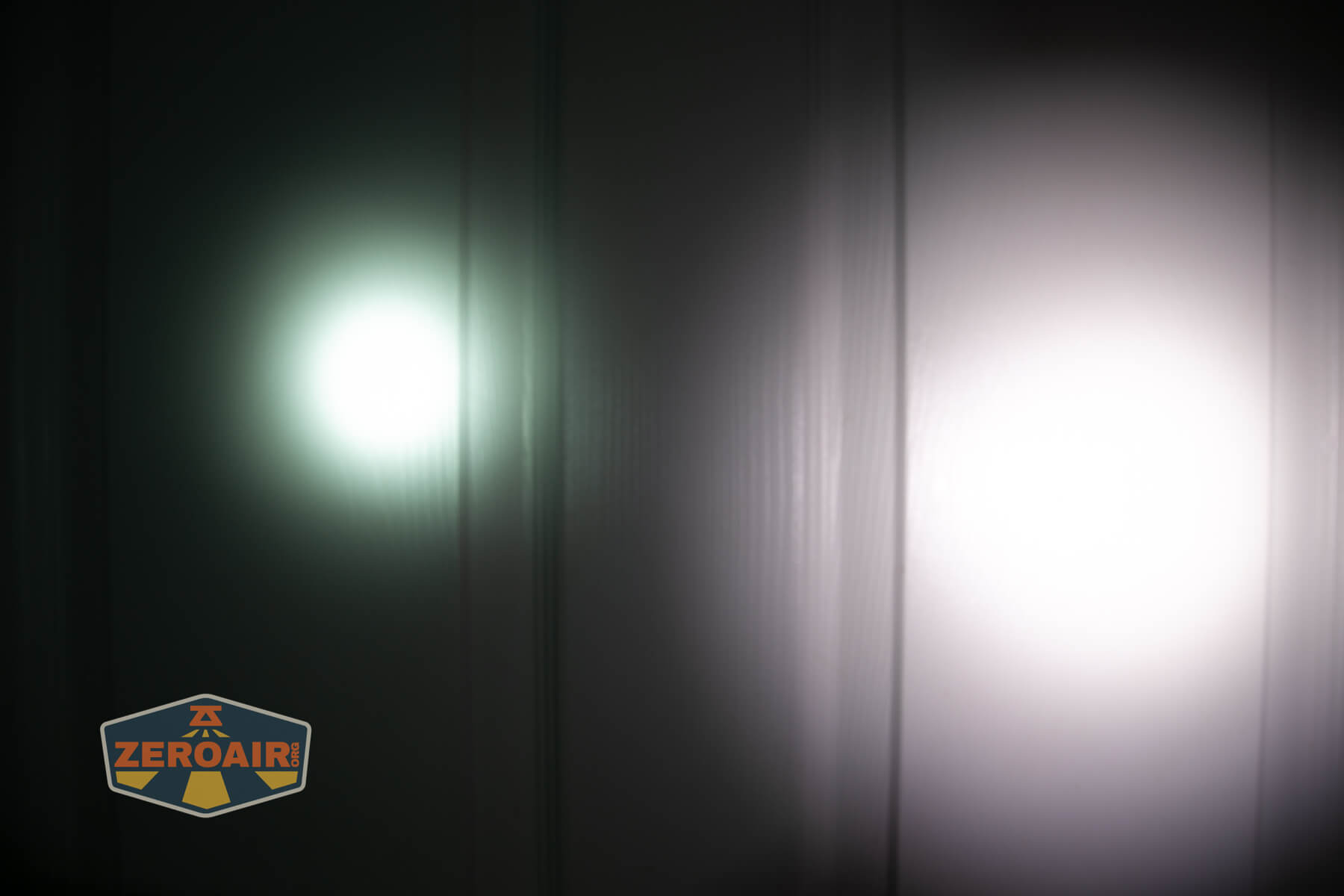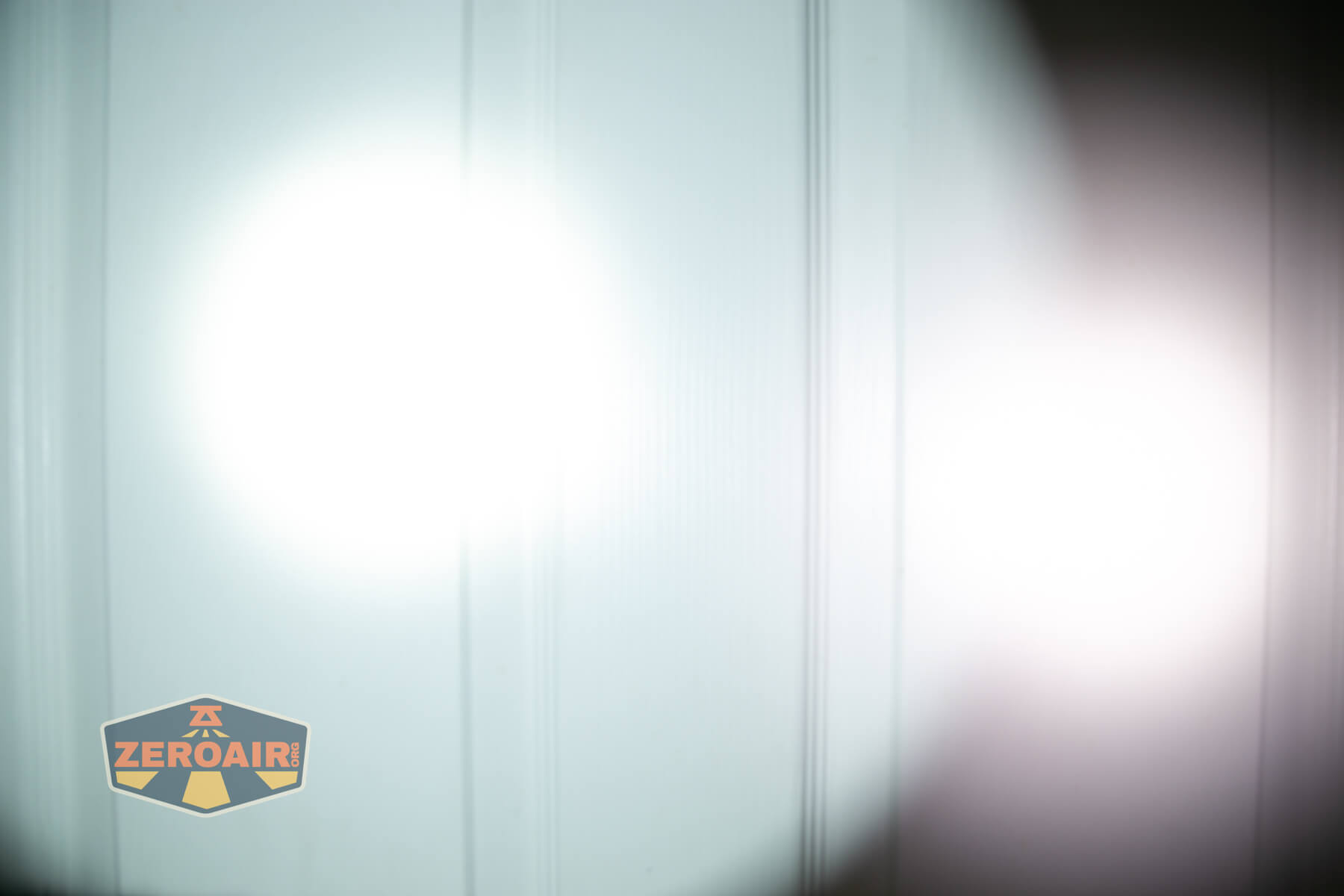Armytek Dobermann Pro Max Tactical Flashlight Review
The Armytek Dobermann Pro Max tactical flashlight offers a Luminus SFT-70 emitter and smooth reflector for great throw. It has dual switches and charging, too!
Official Specs and Features
Here’s a link to the Armytek Dobermann Pro Max tactical flashlight product page.
Versions
The Armytek Dobermann Pro Max tactical flashlight is available in only one version.
Price
The Armytek Dobermann Pro Max tactical flashlight is available for $114.99 and can be purchased at flashlightgo.com. You can also buy the Armytek Dobermann Pro Max through Amazon.com with my referral link. I believe this ships from the USA, so you can get the flashlight sooner!
What’s Included
- Armytek Dobermann Pro Max tactical flashlight
- 5000mAh 21700
- Charging connector
- Pocket clip
- Nylon pouch
- Tactical ring
- Lanyard
- Spare o-rings (2)
- 18650 adapter
- Hard plastic case (seen below)
- Manual
Package and Manual
This is the manual that ships in the package. There’s a QR code on the manual that’s supposed to take you to a full manual, but that didn’t work for me.
Build Quality and Disassembly
The Armytek Dobermann Pro Max tactical flashlight has Armytek’s typical matte finish anodizing. That adds a bit of grip, which is good for a tactical light such as this. The build quality is good.
Again, as you’d expect and want on a tactical light, both the head and tail have robust springs.
The head does not come off the light, so this is the best view of that positive spring I can give!
Size and Comps
Head diameter: 34.5 mm
Body diameter: 25.4 mm
Length: 153 mm
Weight (without battery): 133 g
If the flashlight can headstand, I’ll show it here. If it can tailstand, I’ll also show that here!
Here’s the test light with the venerable Convoy S2+. The version below is a custom laser-engraved Convoy S2+ host by GadgetConnections.com. I did a full post on an engraved orange host right here! Or go straight to GadgetConnections.com to buy your Convoy S2+ now!
Also in the photo above, my Standard Reference Material (SRM) flashlight is the Hanko Machine Works Trident, an 18350 light. While I have not reviewed or tested the Gunner Grip version seen here, I have tested a Hanko Machine Works Trident Total Tesseract in brass. I love the Trident, and it’s a striking contrast to the inexpensive Convoy S2+, another great SRM.
Retention and Carry
Armytek includes a pocket clip and a tactical ring.
I believe you can use these at the same time, which is a nice little bonus feature!
A lanyard is included for attaching to the Armytek Dobermann Pro Max tactical flashlight. It can attach through this little loop on the tail.
A soft nylon pouch is included, as well.
This pouch, interestingly, offers a separate stretchy sleeve area for spare cells!
Power and Runtime
The Armytek Dobermann Pro Max tactical flashlight runs a single lithium-ion cell. In this case, a 5000mAh 21700 is included. It’s a standard cell.
The cell goes into the light in the usual way – positive end toward the head.
Armytek includes a little plastic adapter so that you can use a single 18650, too!
I didn’t test it, but this light can use two CR123 cells, too. But do NOT charge those in the light!!
Below are three runtime tests. Output is nice and high for around a minute, then steps down. High holds very steady even at the initial output, though.
The temperature lines in these charts are included as general context, not precise measurements. The values represent the range (min to max) during testing, but should not be taken as exact readings. Temperature sensors are attached however feasible and not always on the bezel or hottest spot (assuming that can even be clearly defined). Even with ideal placement, too many variables affect temperature to definitively state a specific max value.
Charging
The Armytek Dobermann Pro Max tactical flashlight includes a proprietary magnetic charging connector. The standard cell can, of course, be charged in a bay charger, too.
The connector is quite secure, but it does cover the switch and prevent any use of the light while connected.
Charging takes around 3 hours and is moderately speedy, at around 2A (or 0.5C for this 5000mAh cell).
The charging connector has an indicator – when charging, it’s red. When charging is complete, it turns green. Unlike some other Armytek lights, to charge the Viking Pro, the parts need to be fully tightened.
Modes and Currents
| Mode | Mode Claimed Output (lm) | Claimed Runtime | Measured Lumens |
|---|---|---|---|
| Turbo | 3000 | 2h10m | 2474 (0s) 2425 (30s) |
| Main2 | 665 | 3h25m | 587 (0s) 582 (30s) |
| Main1 | 235 | 12h | 209 |
| Firefly | 9 | 10d | 8.1 |
Pulse Width Modulation
None of the modes use PWM.
Click here to see a “baseline” – a chart with almost no light hitting the sensor.
Then there’s the Ultrafire WF-602C flashlight, which has some of the worst PWM I’ve seen. It’s so bad that I used a post about it to explain PWM! Here are multiple timescales (10ms, 5ms, 2ms, 1ms, 0.5ms, 0.2ms) to make comparing this “worst” PWM light to the test light easier. That post also explains why I didn’t test the WF-602C at the usual 50us scale.
User Interface and Operation
The Armytek Dobermann Pro Max tactical flashlight is controlled by a tail switch and a side e-switch, too. In fact, I think both the switches are e-switches.
It’s a proud and domed switch, and it does prevent tailstanding. It’s a great tactical switch, though.
Here’s a user interface table!
| State | Action | Result |
|---|---|---|
| Off | Click tail switch | On (Memory if enabled, Turbo otherwise) |
| Off | Hold (half press) tail switch | On (Memory if enabled, Turbo otherwise) |
| On | Click side switch | Mode advance (ascending, excludes Firefly) |
| Off | Hold side switch, click tail switch | Firefly |
| Off | Half press then click tail switch | Strobe |
| Firefly | Click side switch | Turbo then ascending main modes |
| Off | Hold side switch, half click tail switch | Activates momentary Firefly (next press of side switch will be Turbo) |
| On | Hold side switch for 5 seconds | Iterate Strobe mode enable/disable (blinks to notify of change) |
| On | Hold side switch for 10 seconds | Iterate automemorization enable/disable (blinks twice to notify of change) |
| Any | Loosen tailcap 1/4 turn | Lockout |
| Lockout | Tighten tailcap fully | Unlocked |
LED and Beam
The Armytek Dobermann Pro Max tactical flashlight uses a Luminus SFT-70 emitter. That emitter has no dome, and the light has a smooth reflector, so as you might expect, the throw on this light is very high (high cd/lm, too!)
And since I haven’t mentioned it at any point above, the steel bezel on this light is very nice! It has the right “toothiness” without being sharp.
LED Color Report (CRI and CCT)
This light ranges from cool white to very cool white and has low CRI. The beam profile is very tight and throwy though, so we often forgive cool white low CRI output on tactical lights like this.
CCT (Correlated Color Temperature) refers to the measurement of the color appearance of light, expressed in Kelvins (K), which indicates whether the light is warm (yellowish) or cool (bluish). A lower CCT (below 3000K) is considered warm light, while a higher CCT (above 5000K) gives cooler, bluish light.
CRI (Color Rendering Index) is a measure of how accurately a light source renders colors in comparison to natural sunlight. Scored on a scale from 0 to 100, higher CRI values indicate that colors appear more true to life and vibrant, similar to how they would look under the sun.
Beamshots
These beamshots always have the following settings: f8, ISO100, 0.3s shutter, and manual 5000K exposure. These photos are taken at floor level, and the beam hits the ceiling around 9 feet away.
Tint vs BLF-348 (KillzoneFlashlights.com 219b version) (affiliate link)
I keep the test flashlight on the left and the BLF-348 reference flashlight on the right. These photos are taken around 18 inches from the door.
I compare everything to the KillzoneFlashlights.com 219b BLF-348 because it’s inexpensive and has the best tint!
Summary and Conclusion
The Armytek Dobermann Pro Max tactical flashlight is a great light. I love throwy flashlights, and this one is certainly throwy! In particular, I like lights that are surprisingly throwy, and the small body of this Armytek Dobermann Pro Max tactical flashlight offers that! The whole package is nice, including the nylon case, pocket clip, and tactical ring. I’m pleased that it uses a standard cell, so I don’t have to fuss about the proprietary magnetic charging. The build quality is great, and I would expect it to be great for tactical usage!
The Big Table
| Armytek Dobermann Pro Max | |
|---|---|
| Emitter: | Luminus SFT-70 |
| Price in USD at publication time: | $115.00 |
| Cell: | 1×21700 |
| Runtime Graphs | |
| LVP? | Yes |
| Switch Type: | E-switch |
| Quiescent Current (mA): | ? |
| On-Board Charging? | Yes |
| Charge Port Type: | Proprietary magnetic |
| Charge Graph | |
| Power off Charge Port | No |
| Claimed Lumens (lm) | 3000 |
| Measured Lumens (at 30s) | 2425 (80.8% of claim)^ |
| Candela per Lumen | 29.8 |
| Claimed Throw (m) | 460 |
| Candela (Calculated) in cd (at 30s) | 1900lux @ 6.047m = 69476cd |
| Throw (Calculated) (m) | 527.2 (114.6% of claim)^ |
| Claimed CCT | – |
| Measured CCT Range (K) | 6200-6700 Kelvin |
| Item provided for review by: | flashlightgo.com |
| All my Armytek reviews! | |
^ Measurement disclaimer: Testing flashlights is my hobby. I use hobbyist-level equipment for testing, including some I made myself. Try not to get buried in the details of manufacturer specifications versus measurements recorded here; A certain amount of difference (say, 10 or 15%) is perfectly reasonable.
What I like
- Great build quality
- Complete package
- Fantastic throw
- Good user interface (can disable memory, and essentially make this an EDC light)
- Bezel is just right
What I don’t like
- Proprietary magnetic charging
- Price creep ($115)
Notes
- This content originally appeared at zeroair.org. Please visit there for the best experience!
- Please use my Amazon.com referral link to help support zeroair.org!
- Please support me on Patreon! I deeply appreciate your support!
